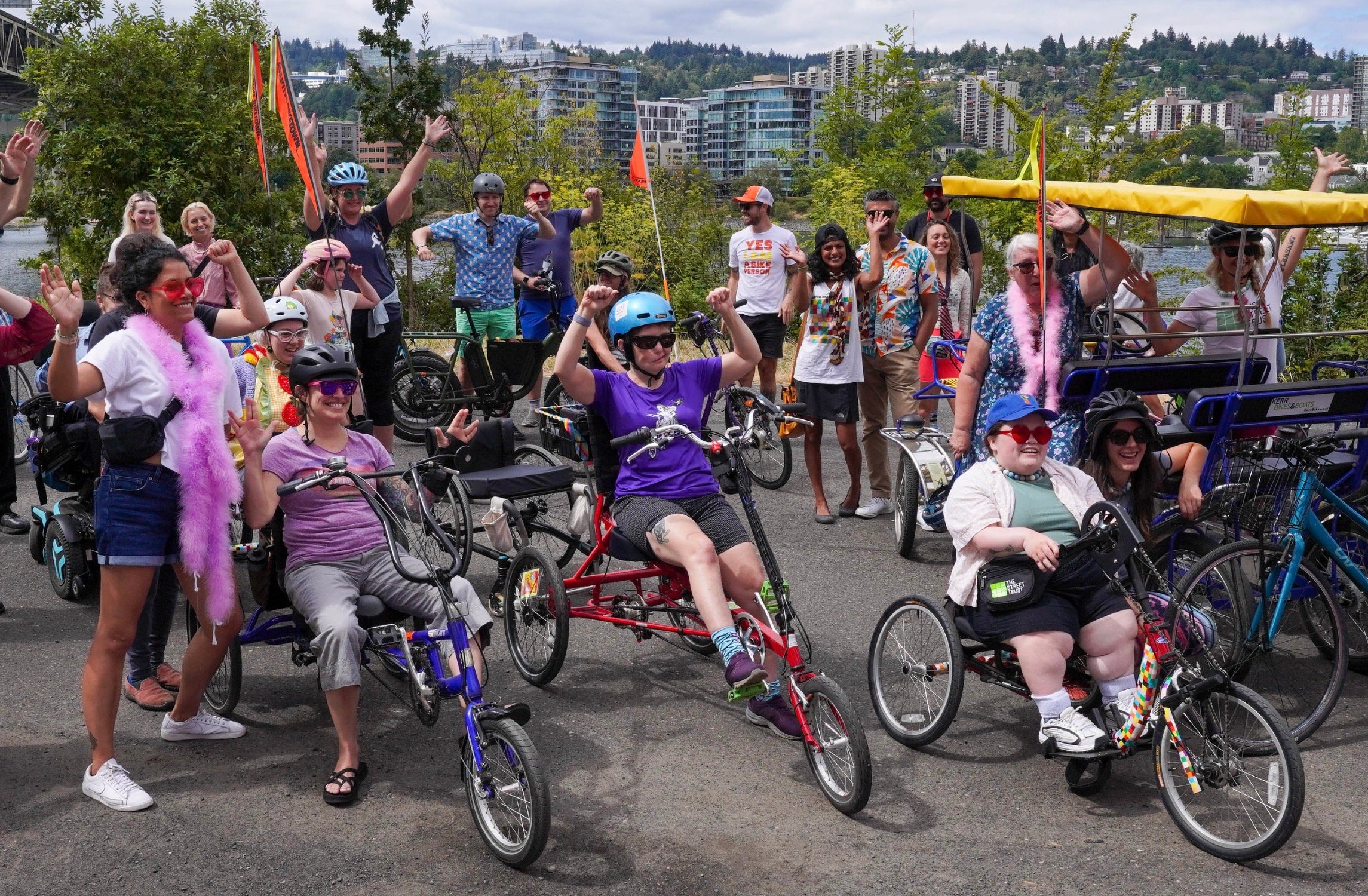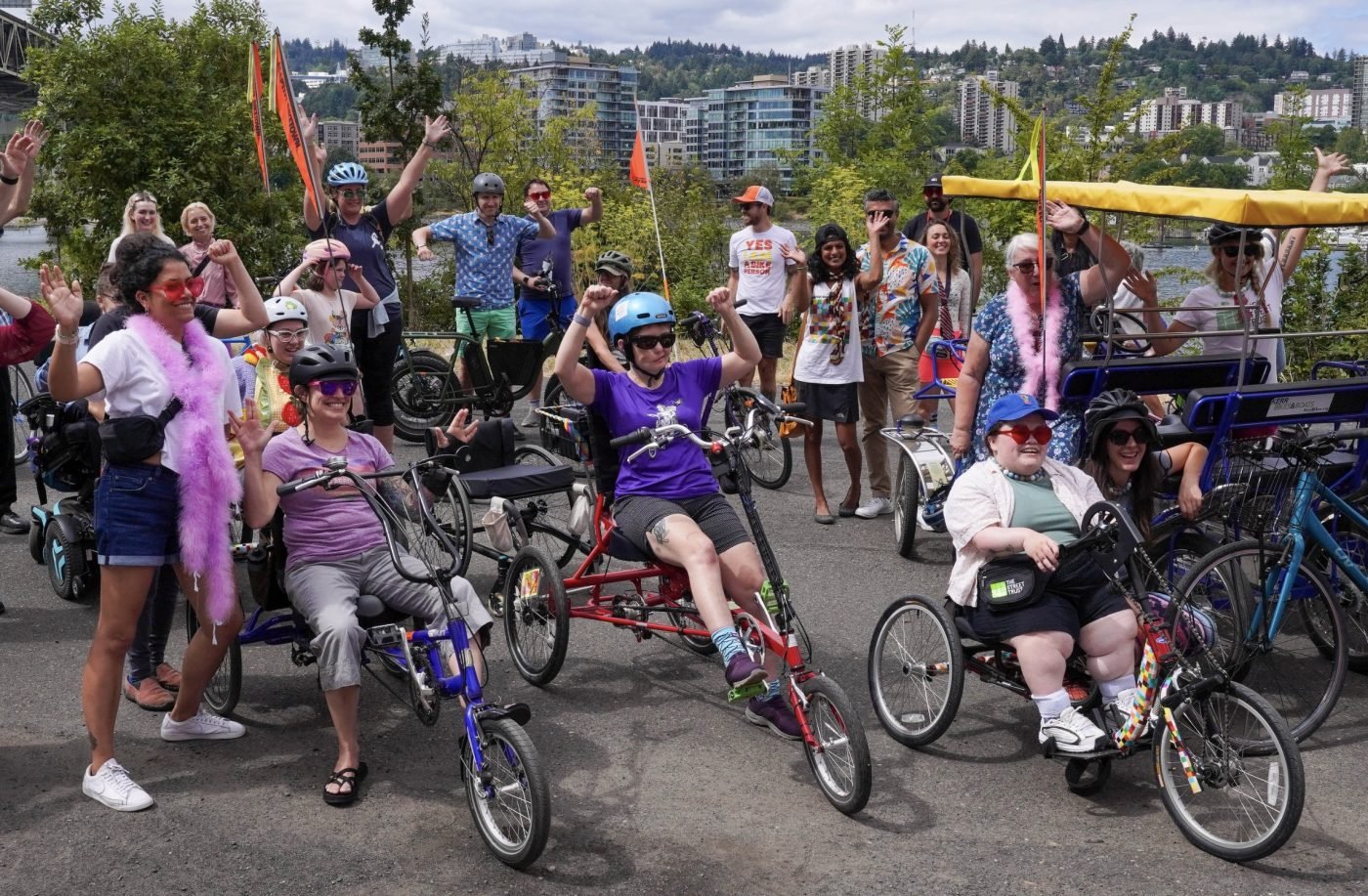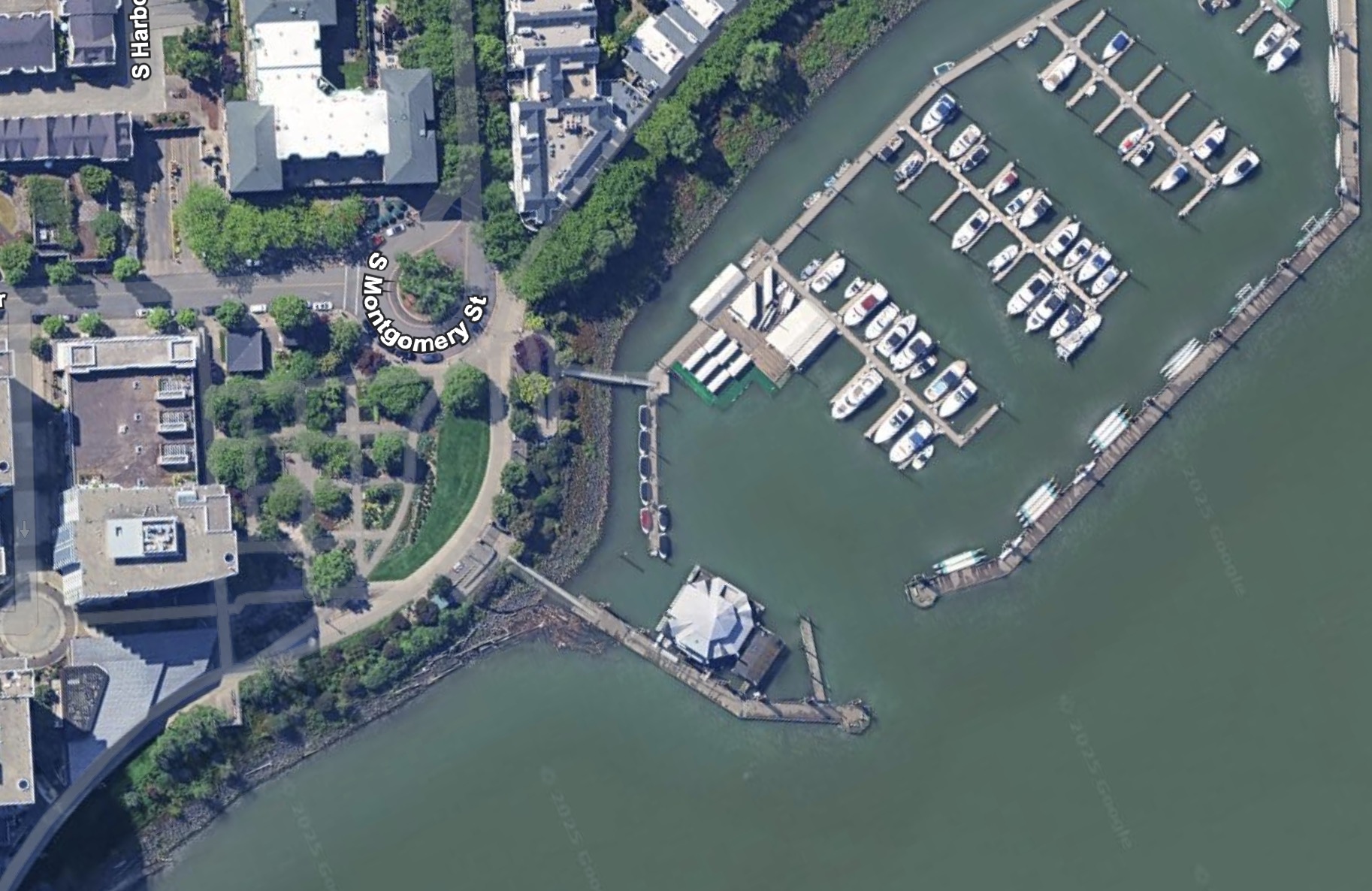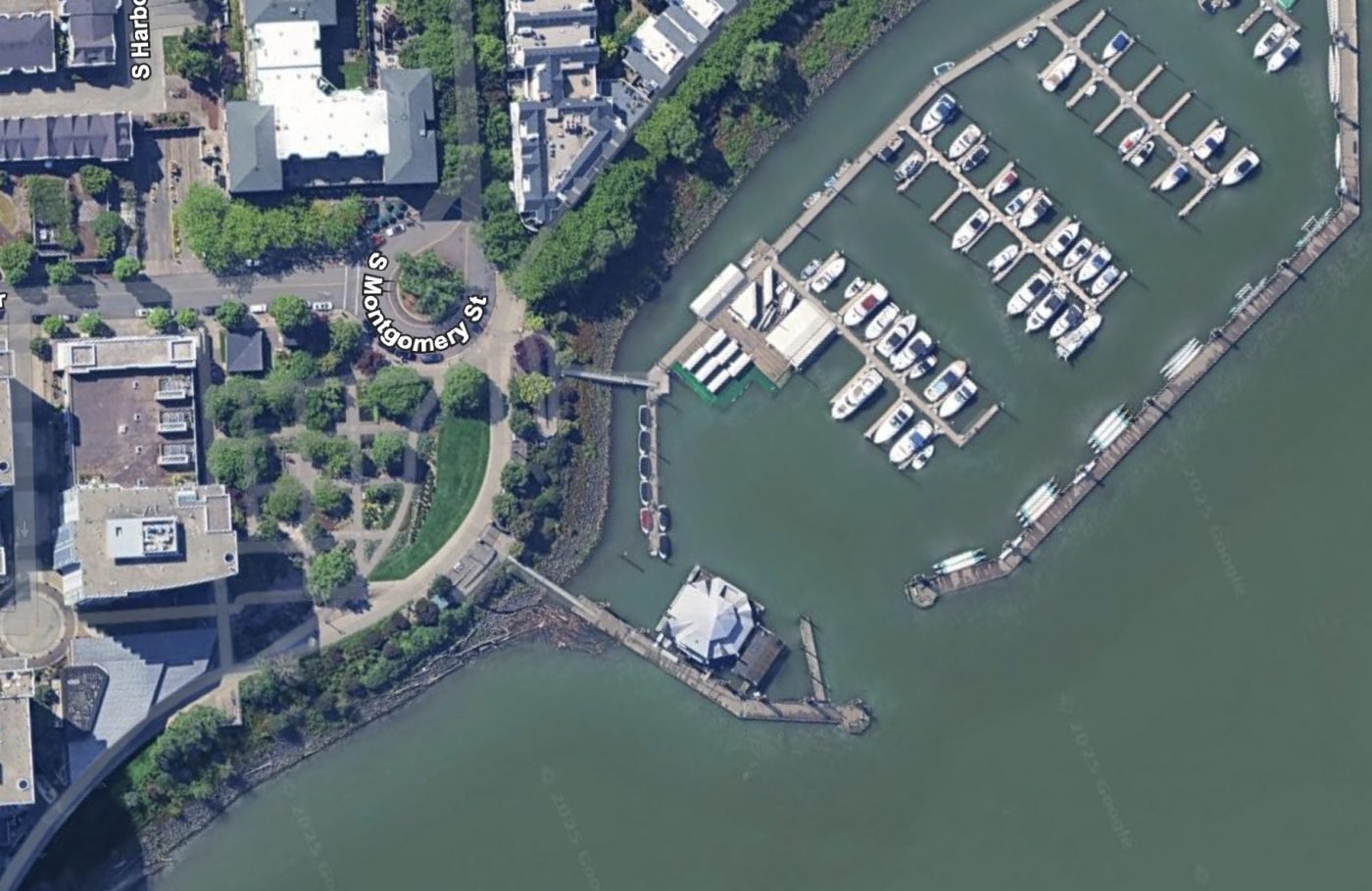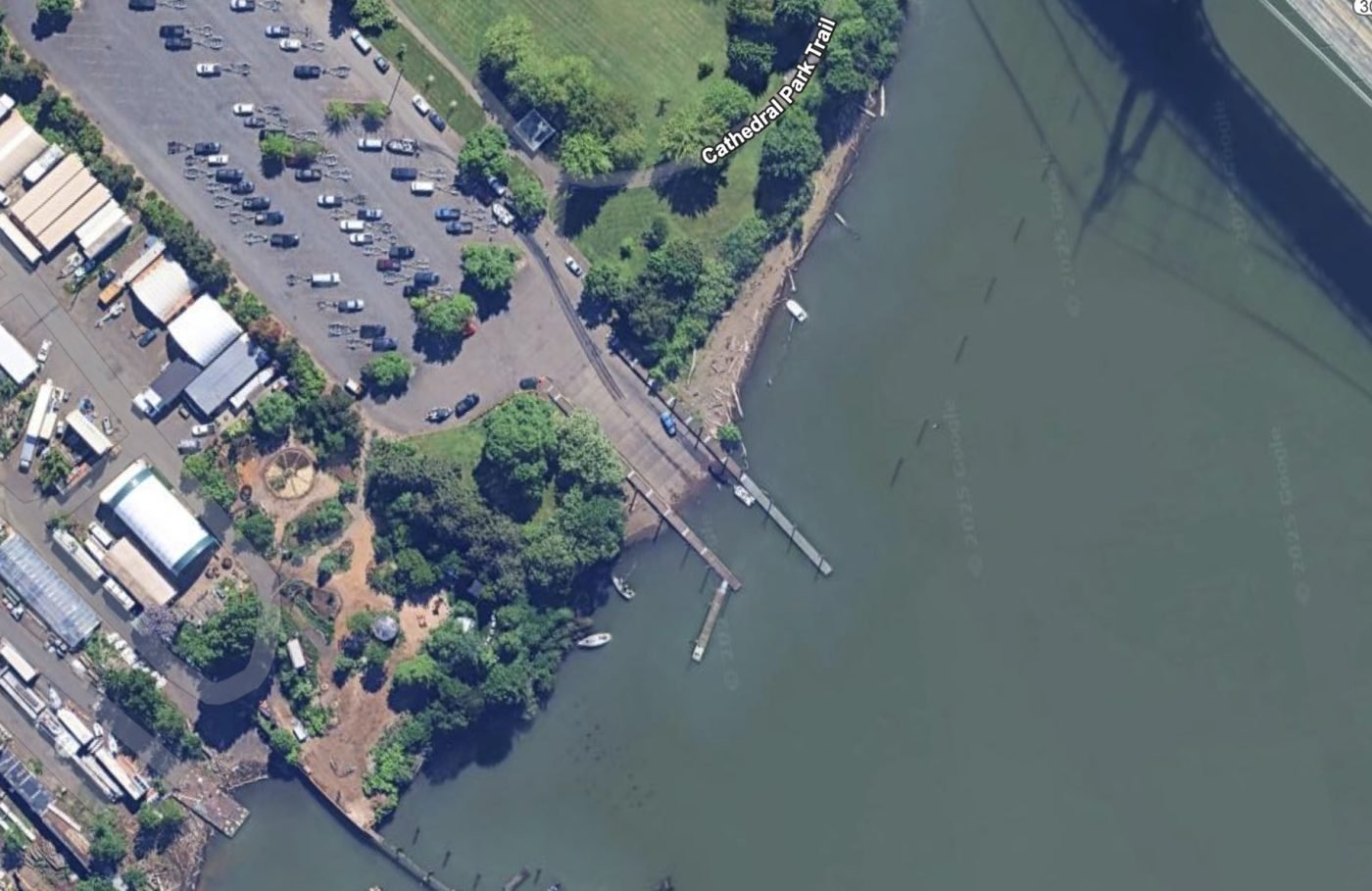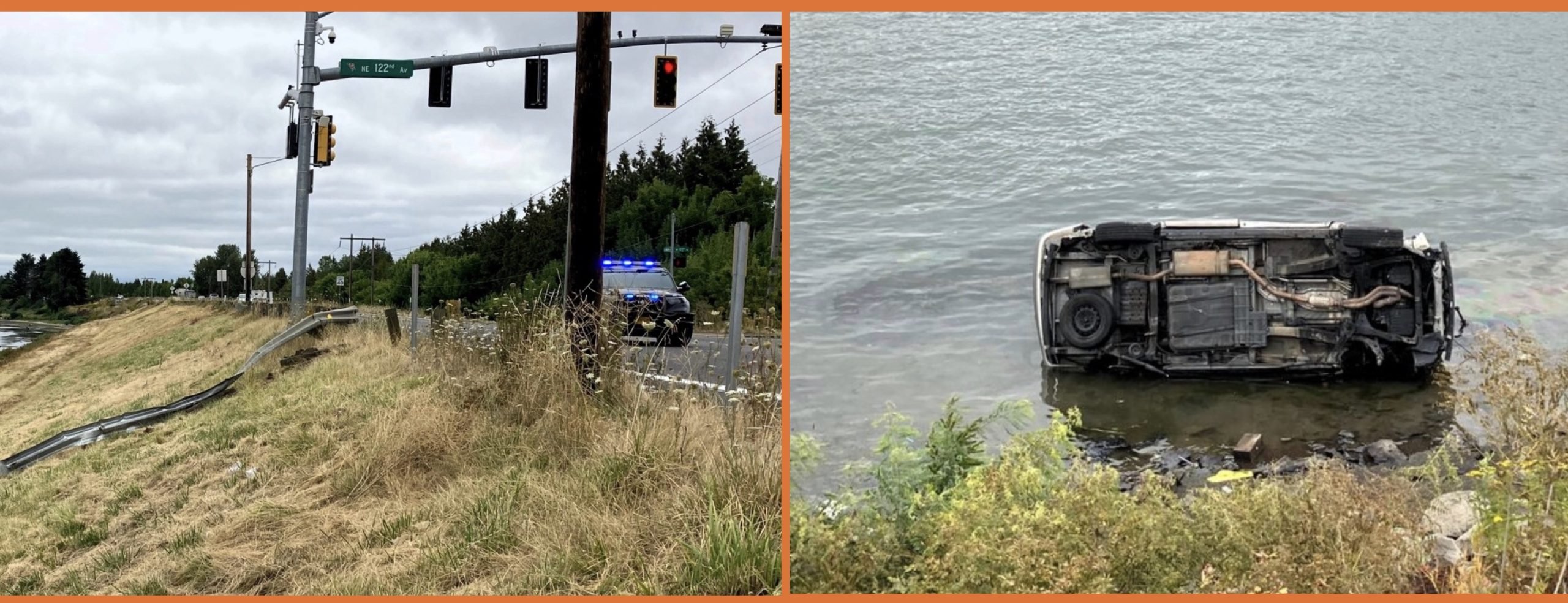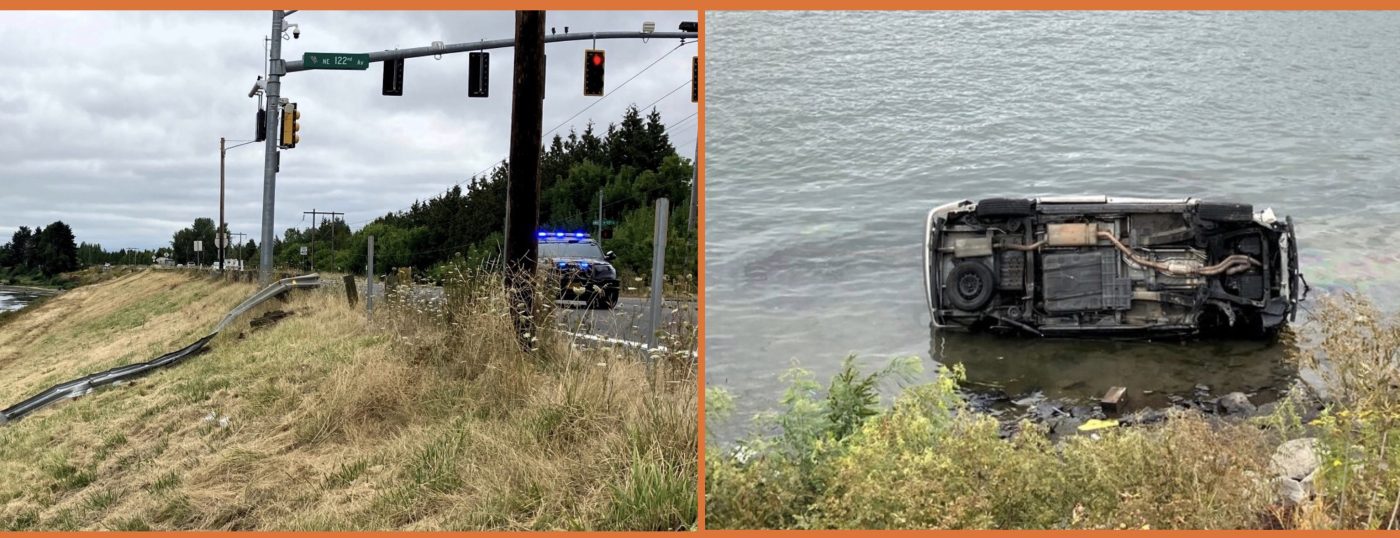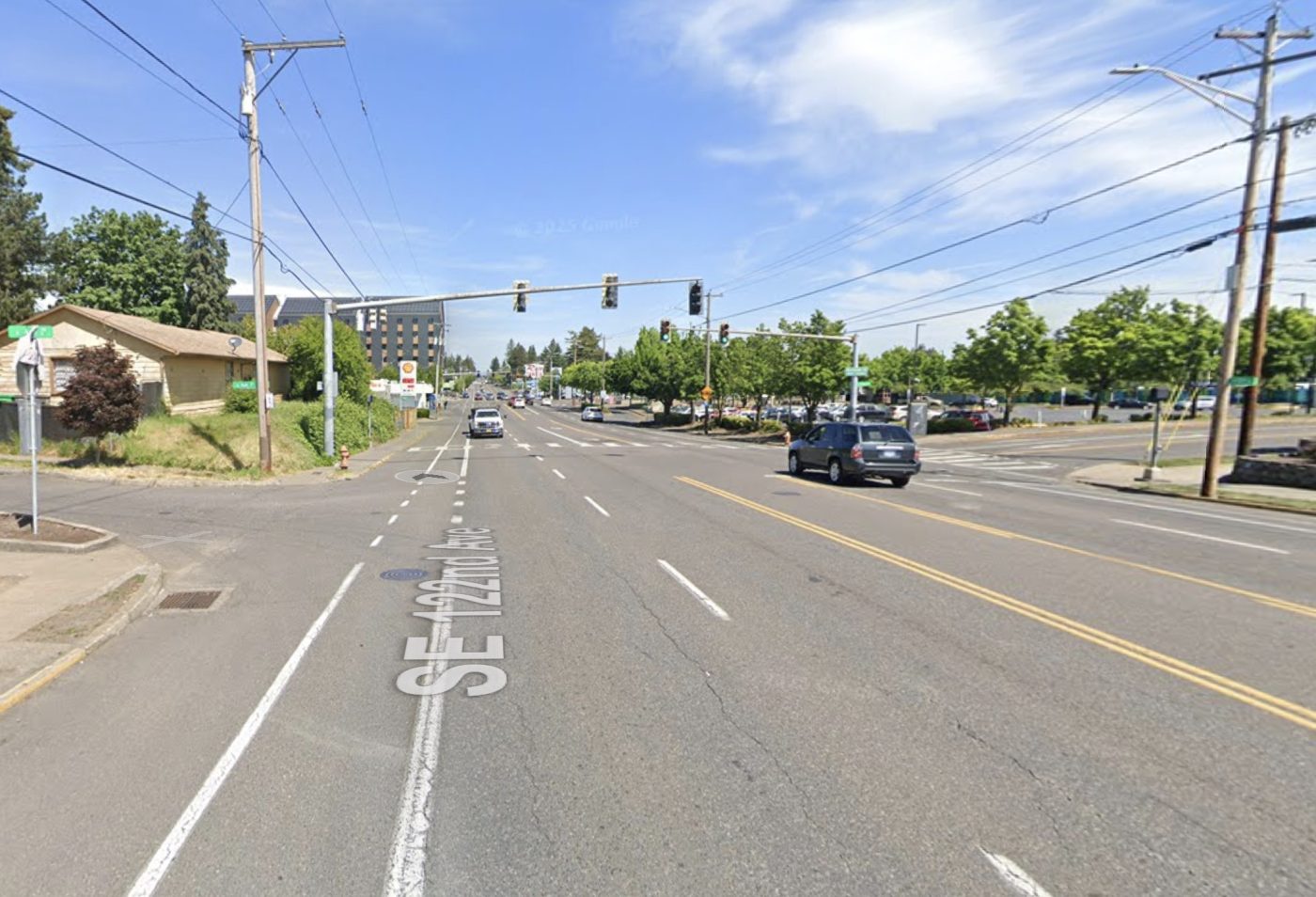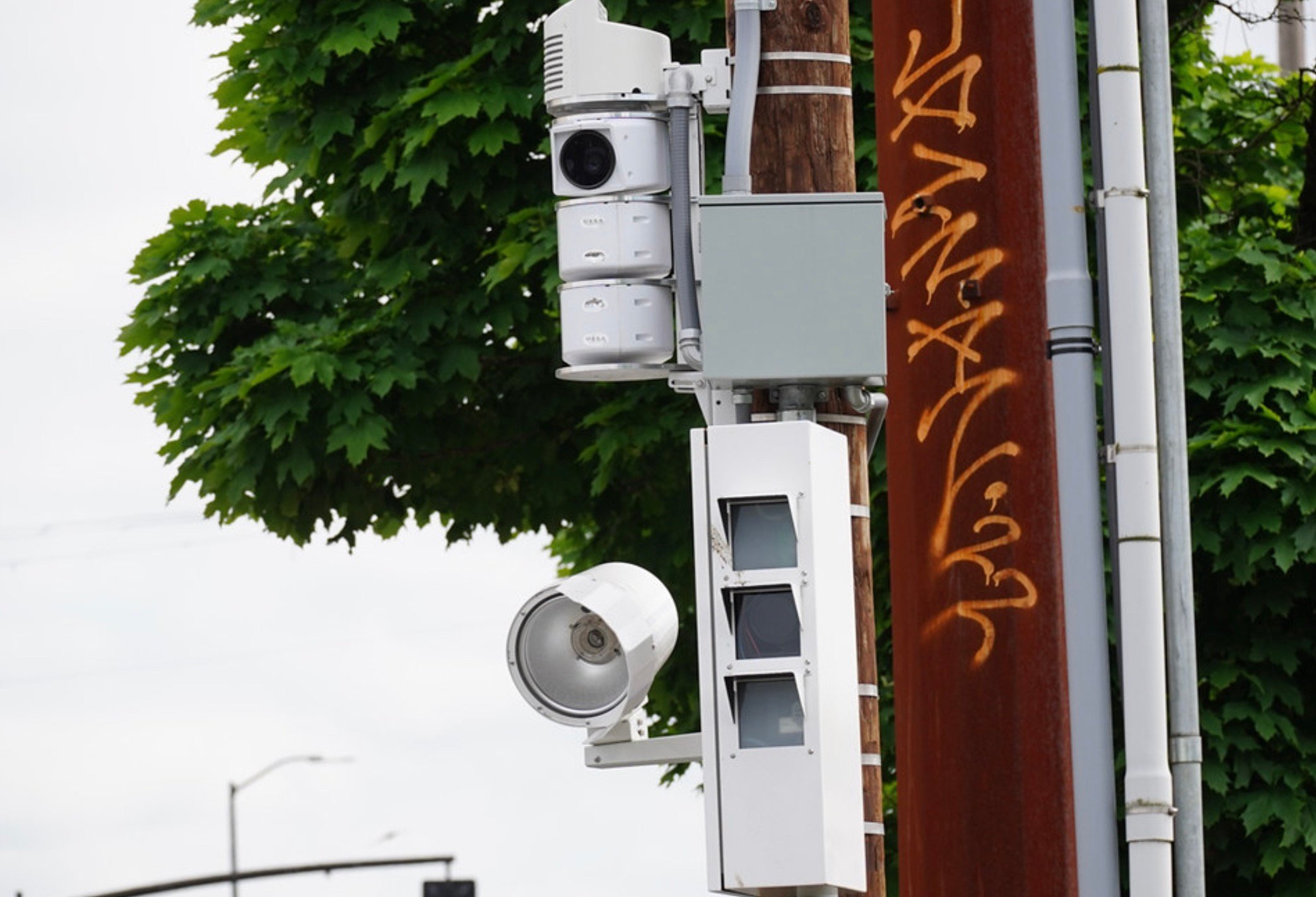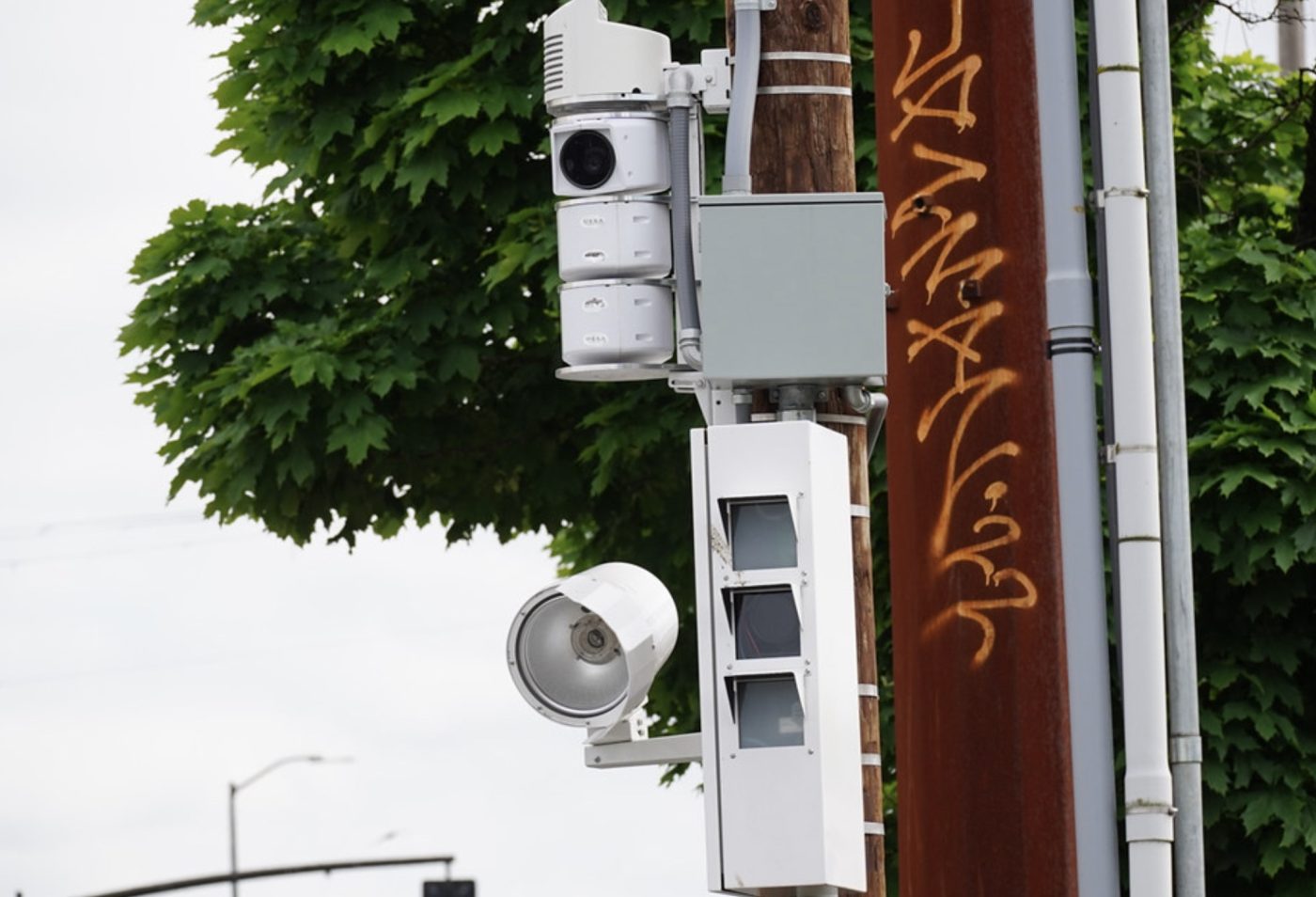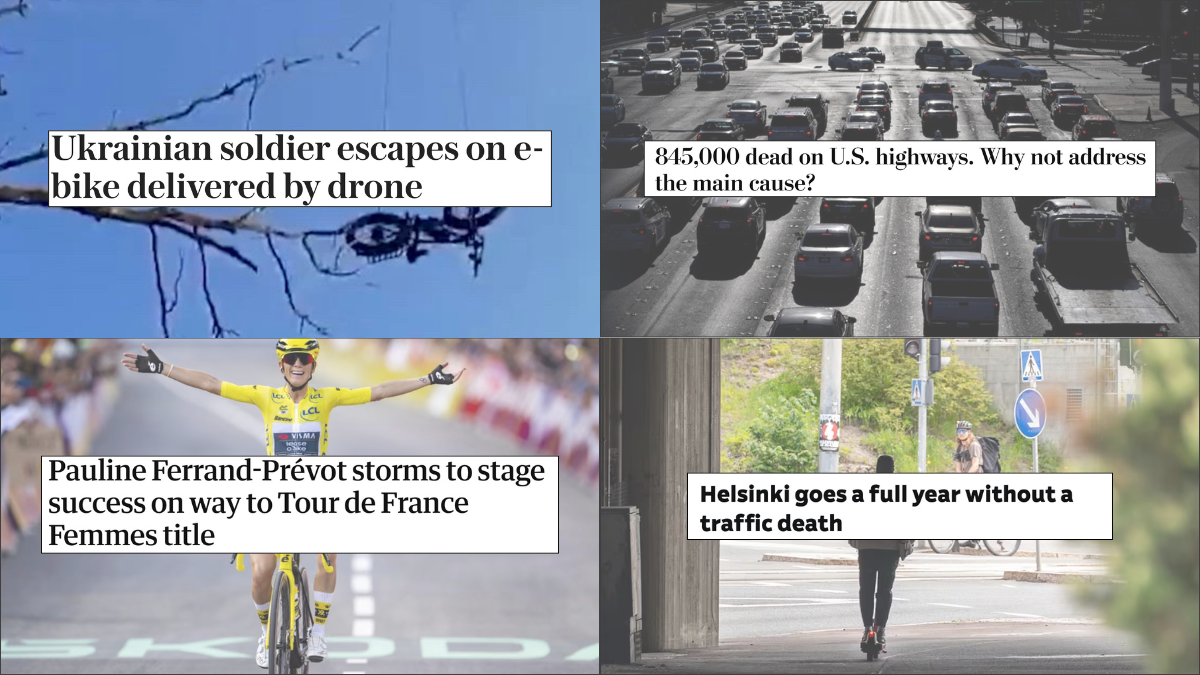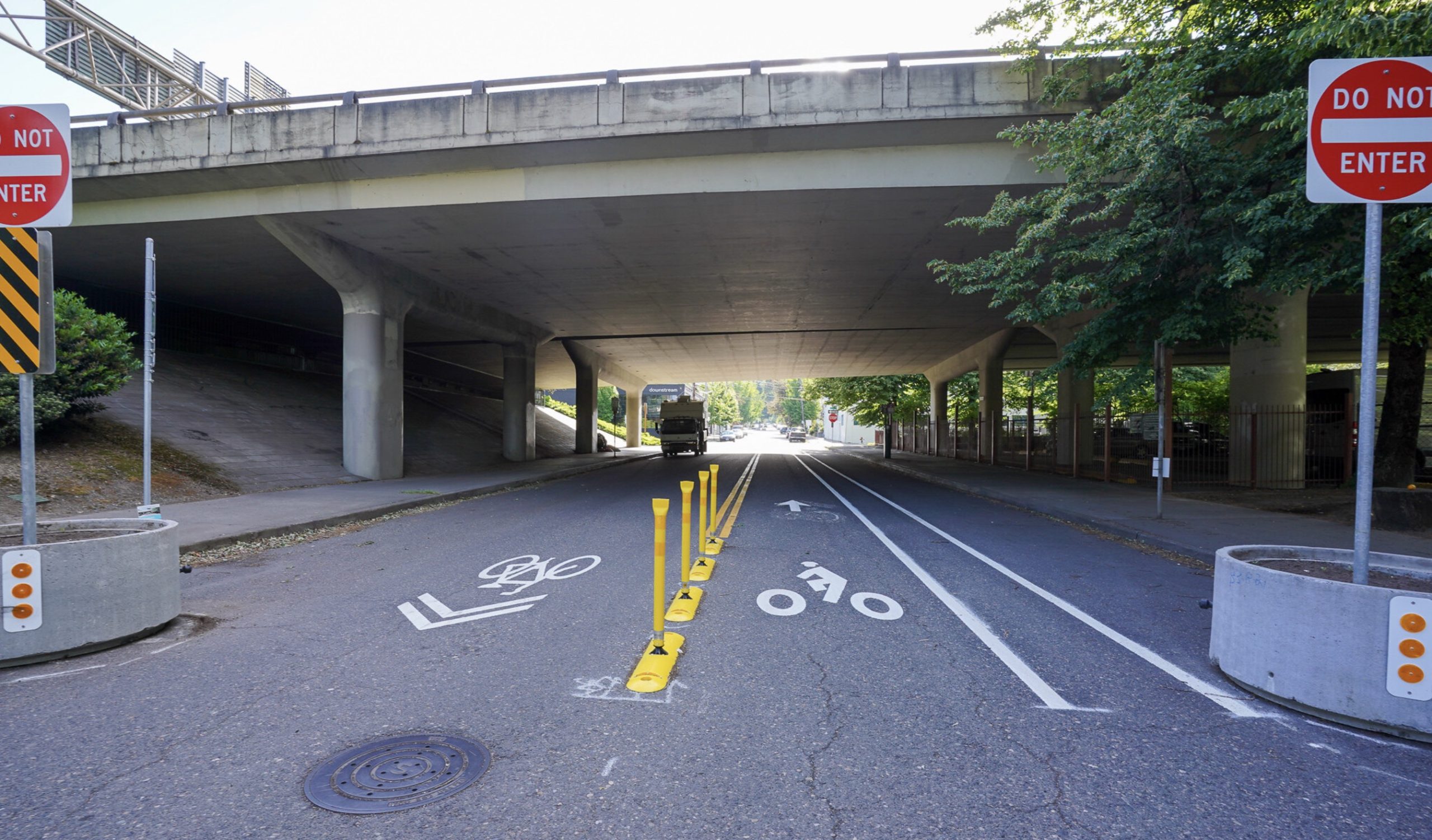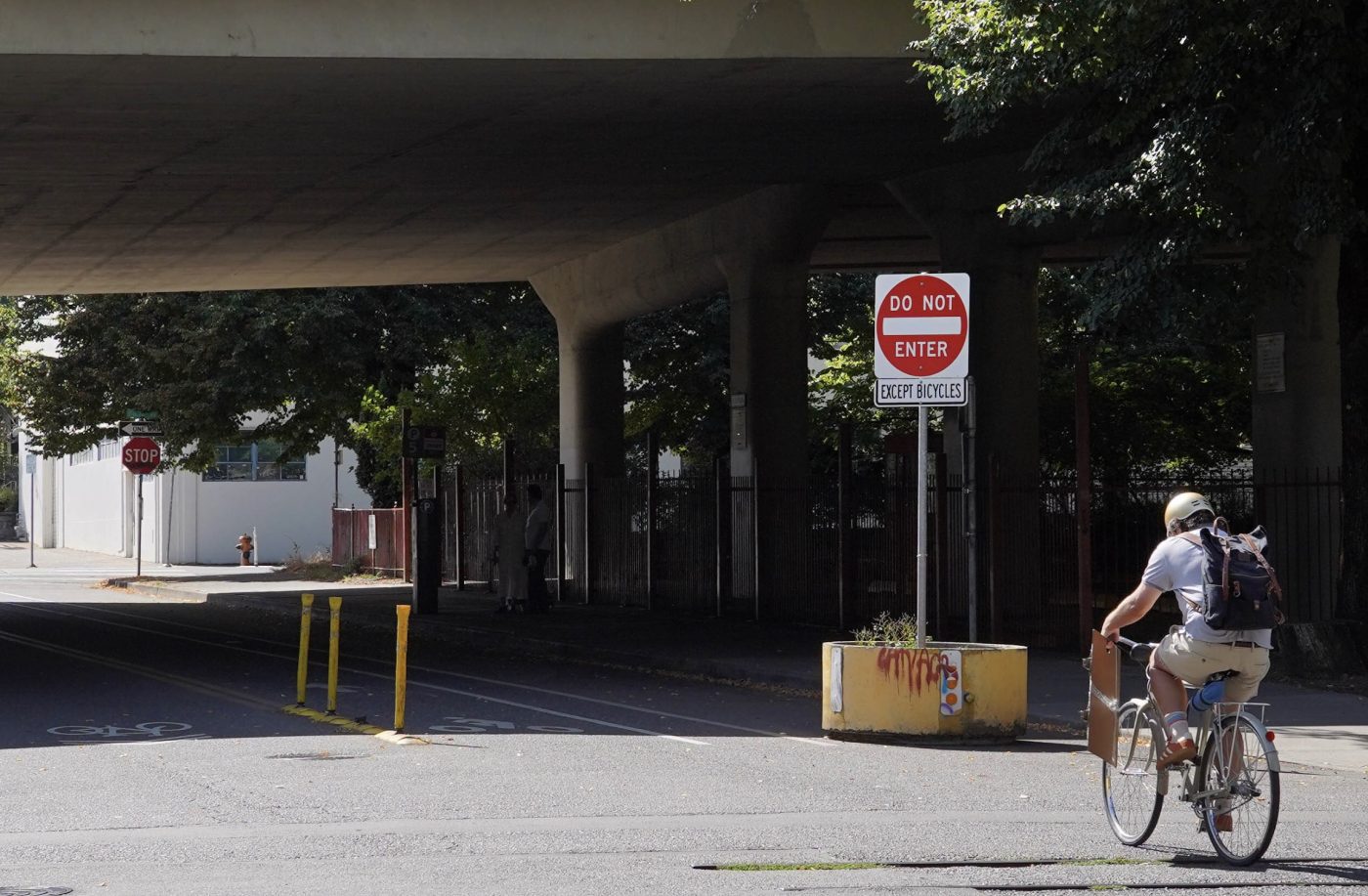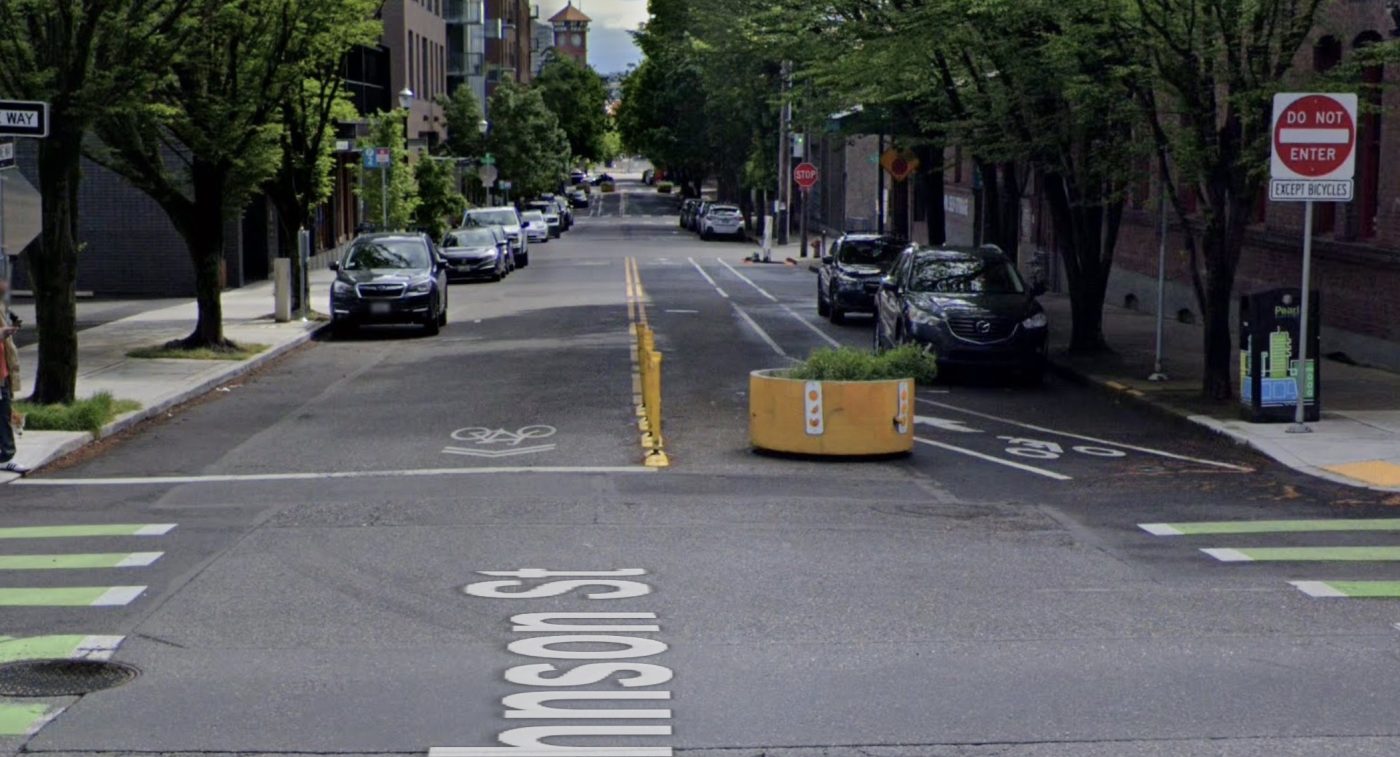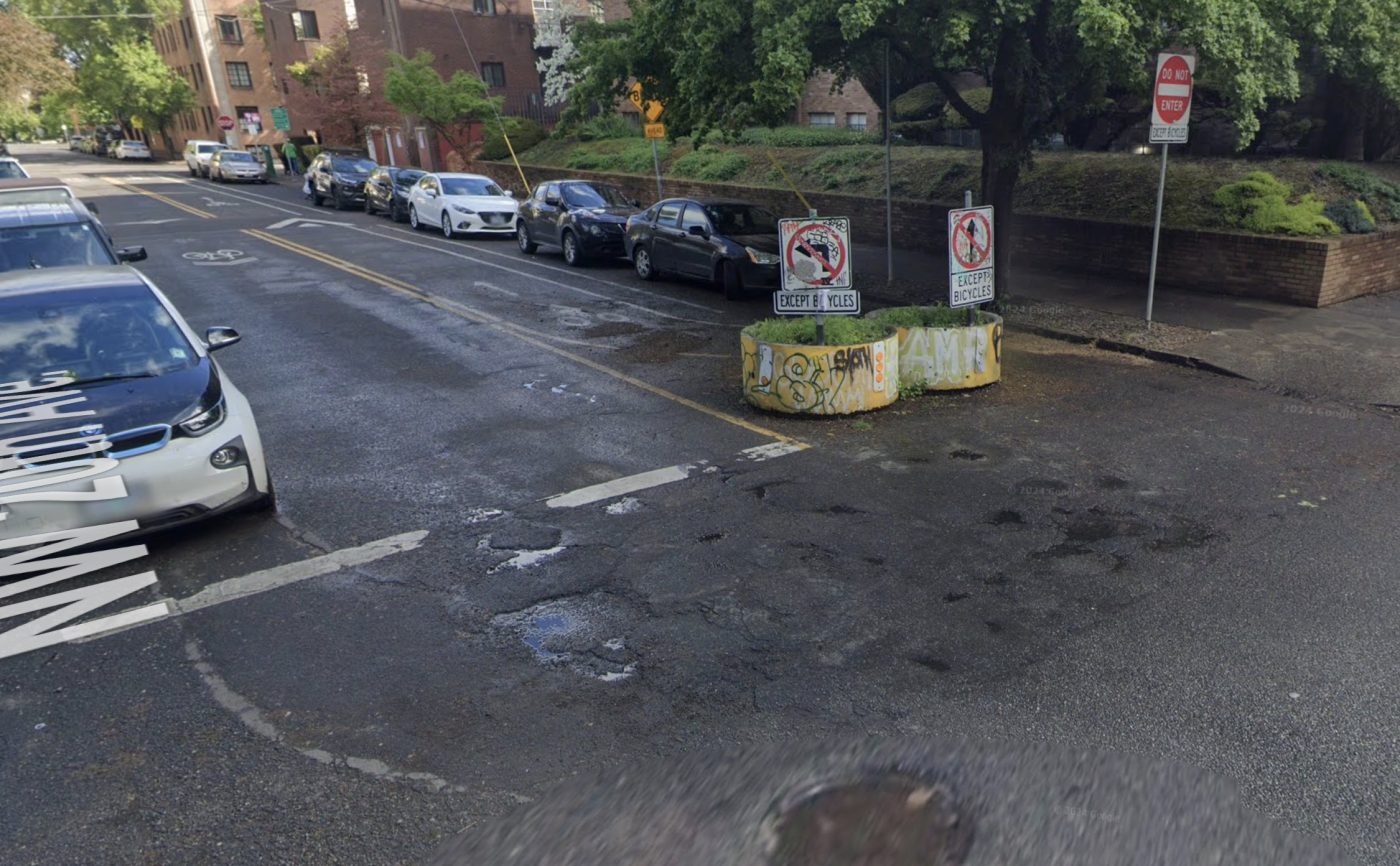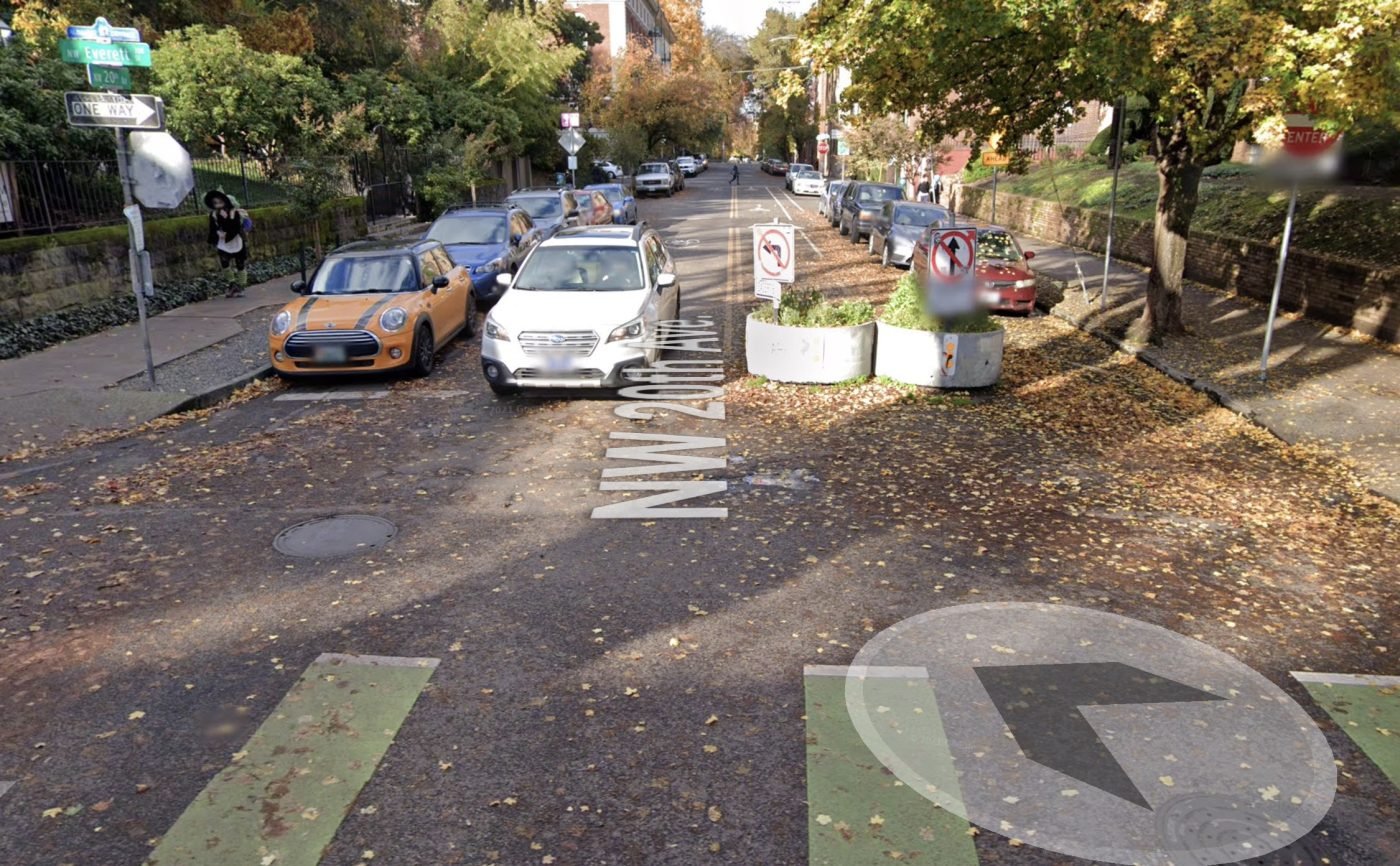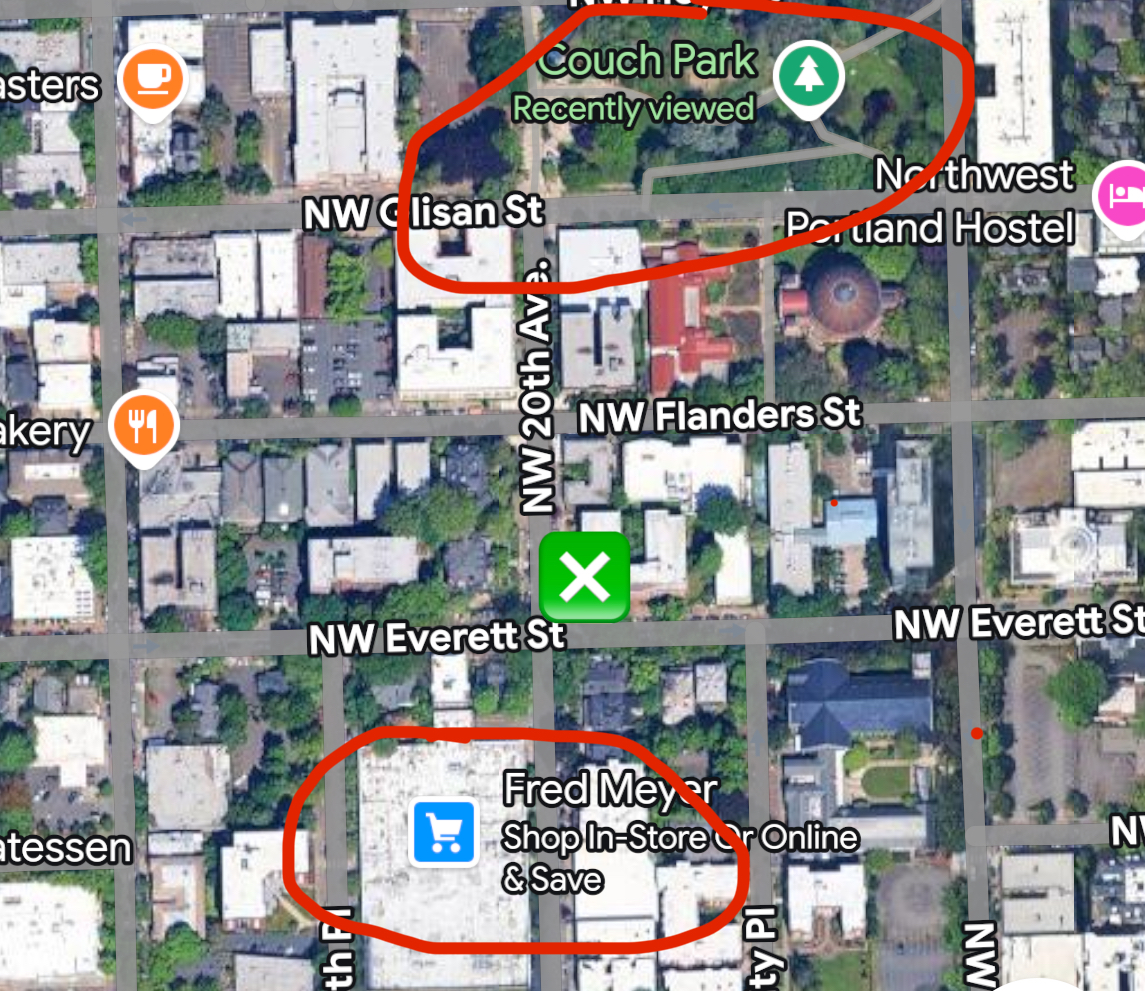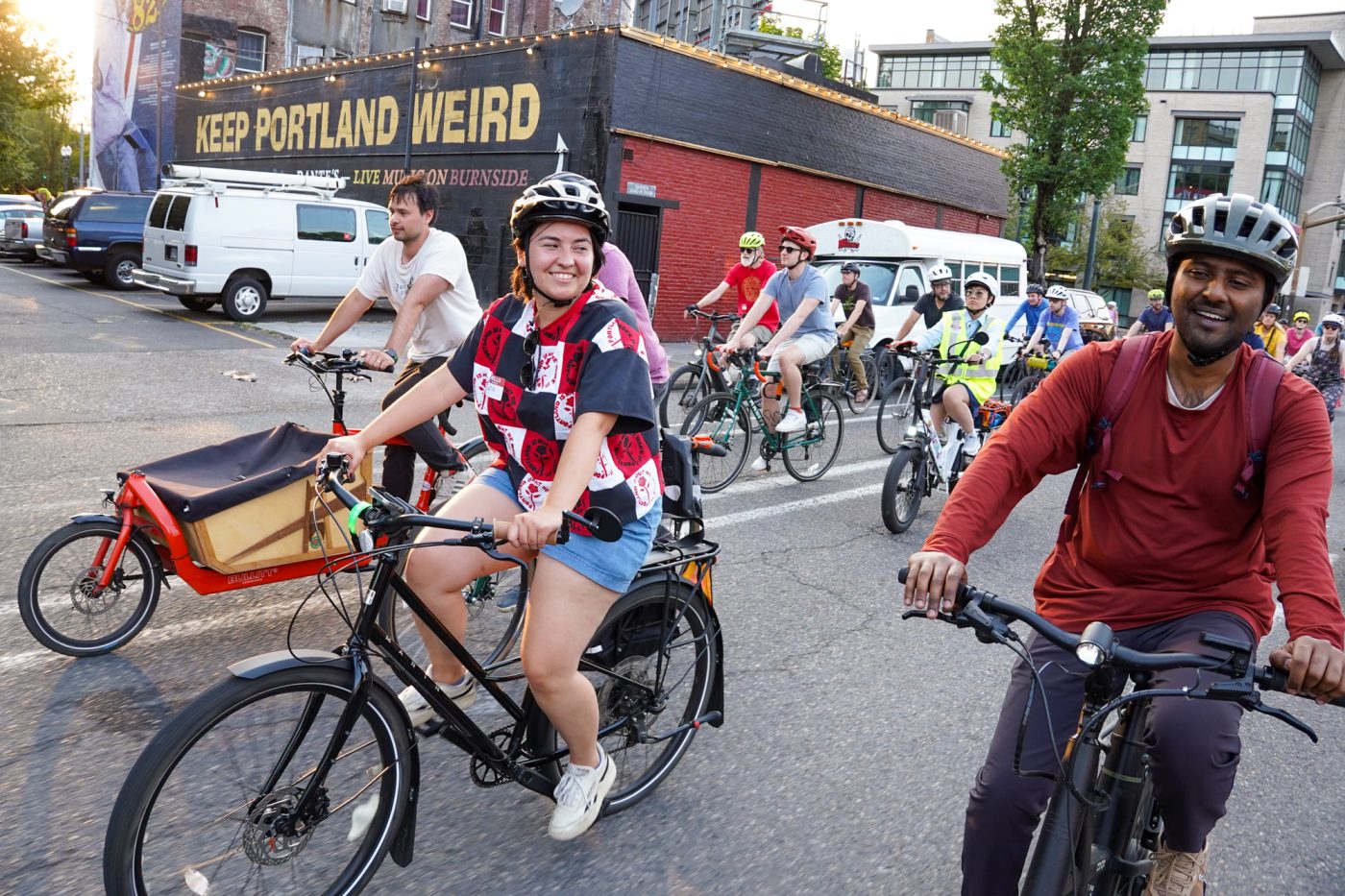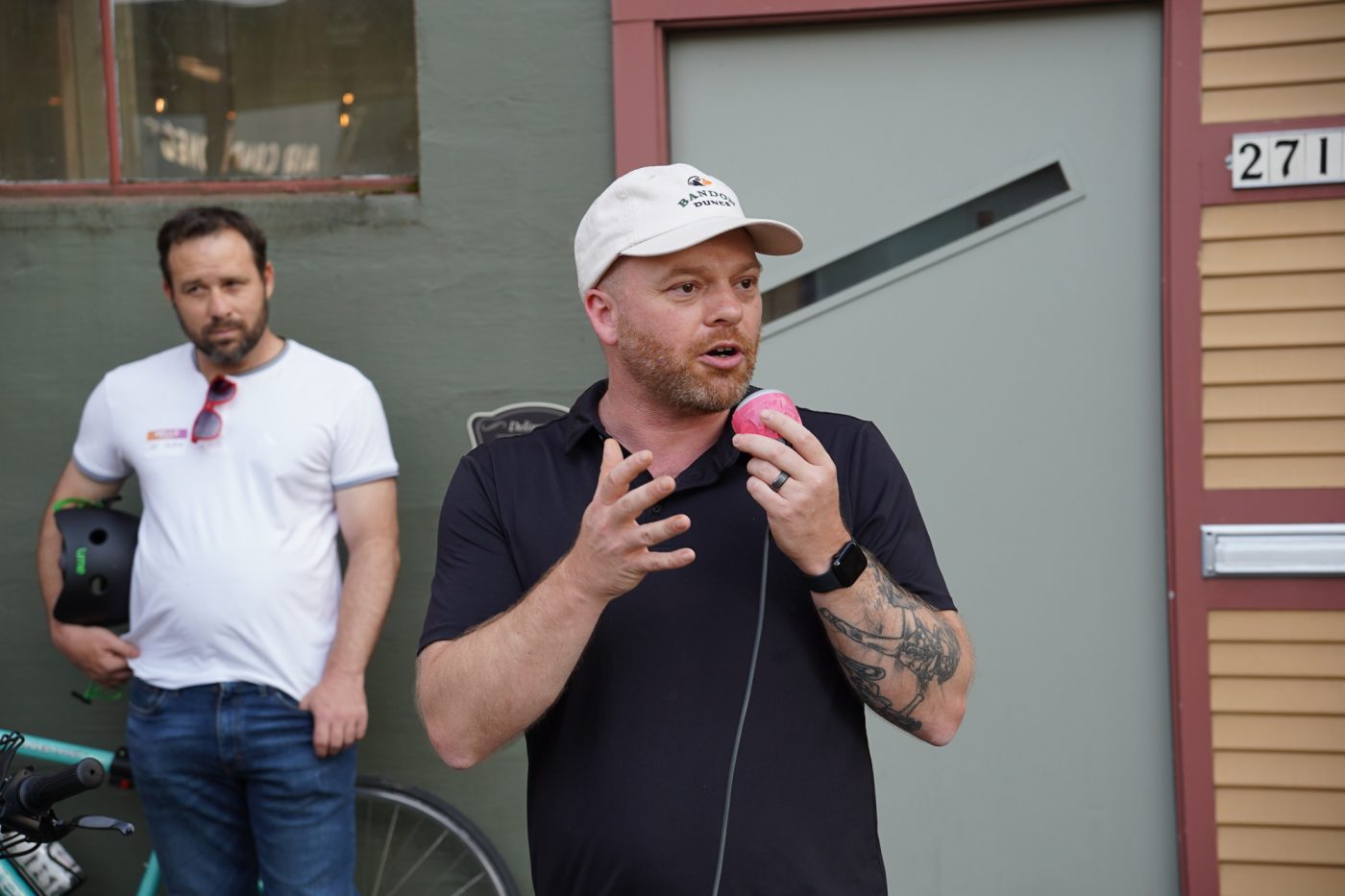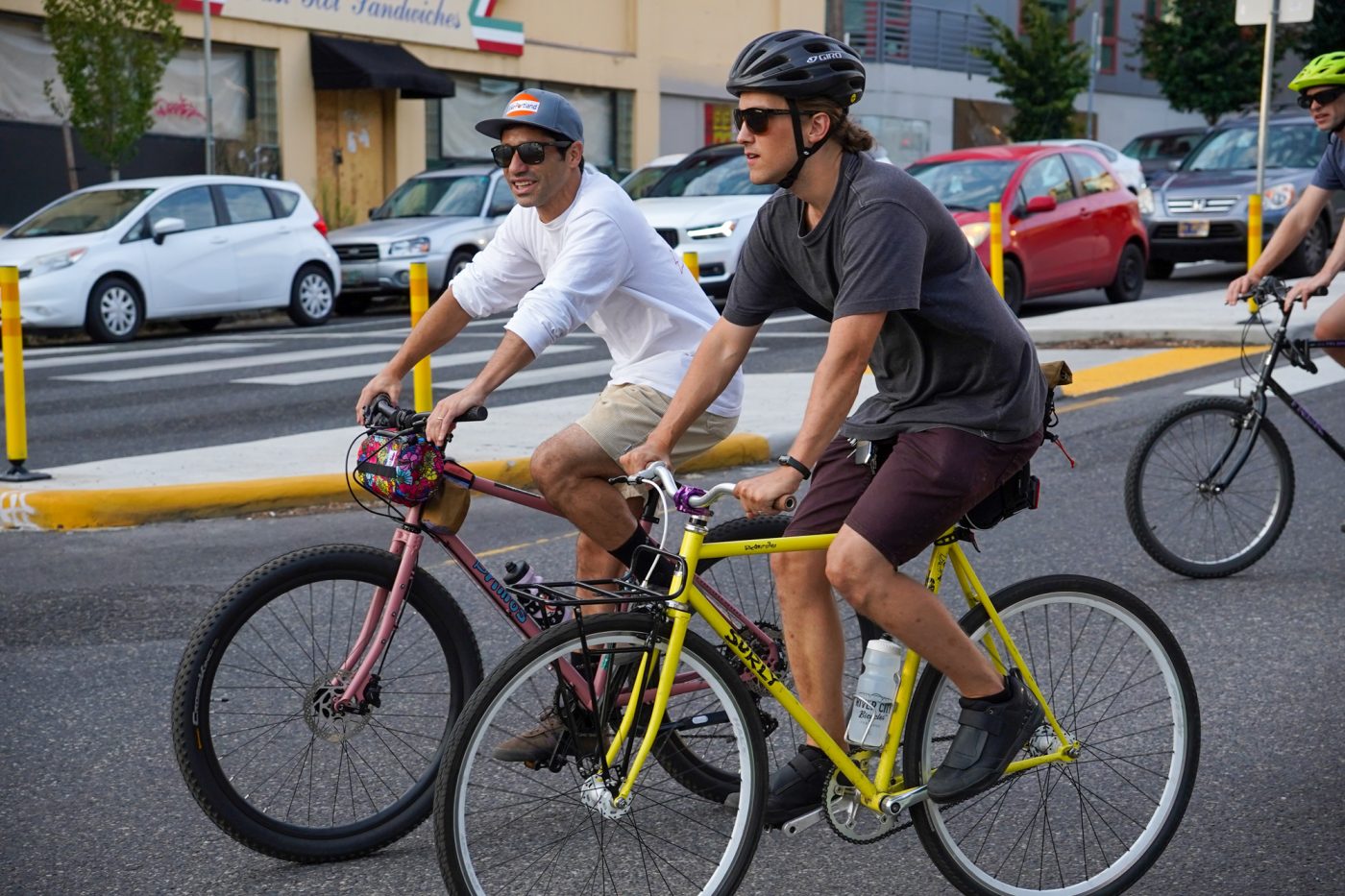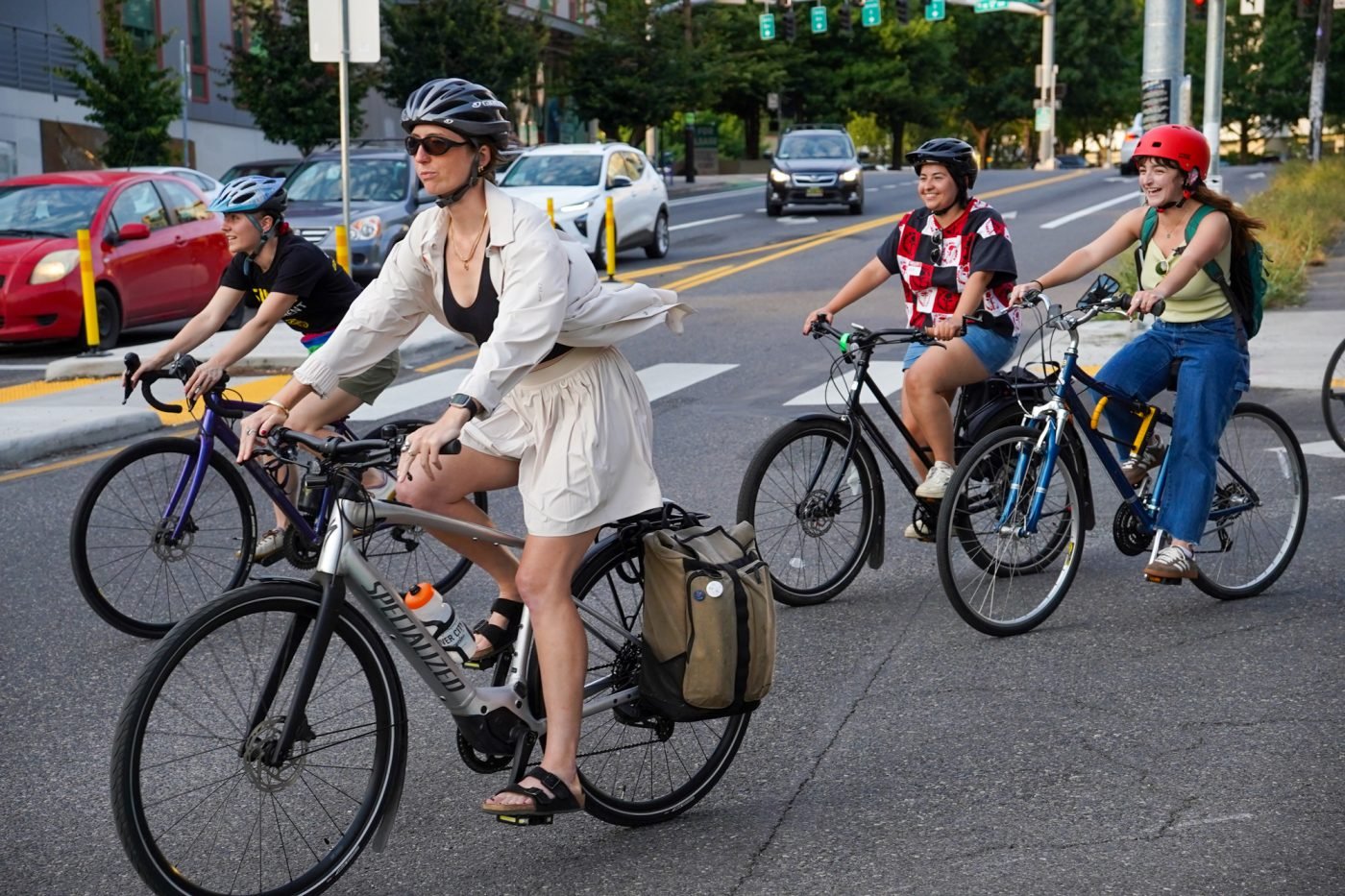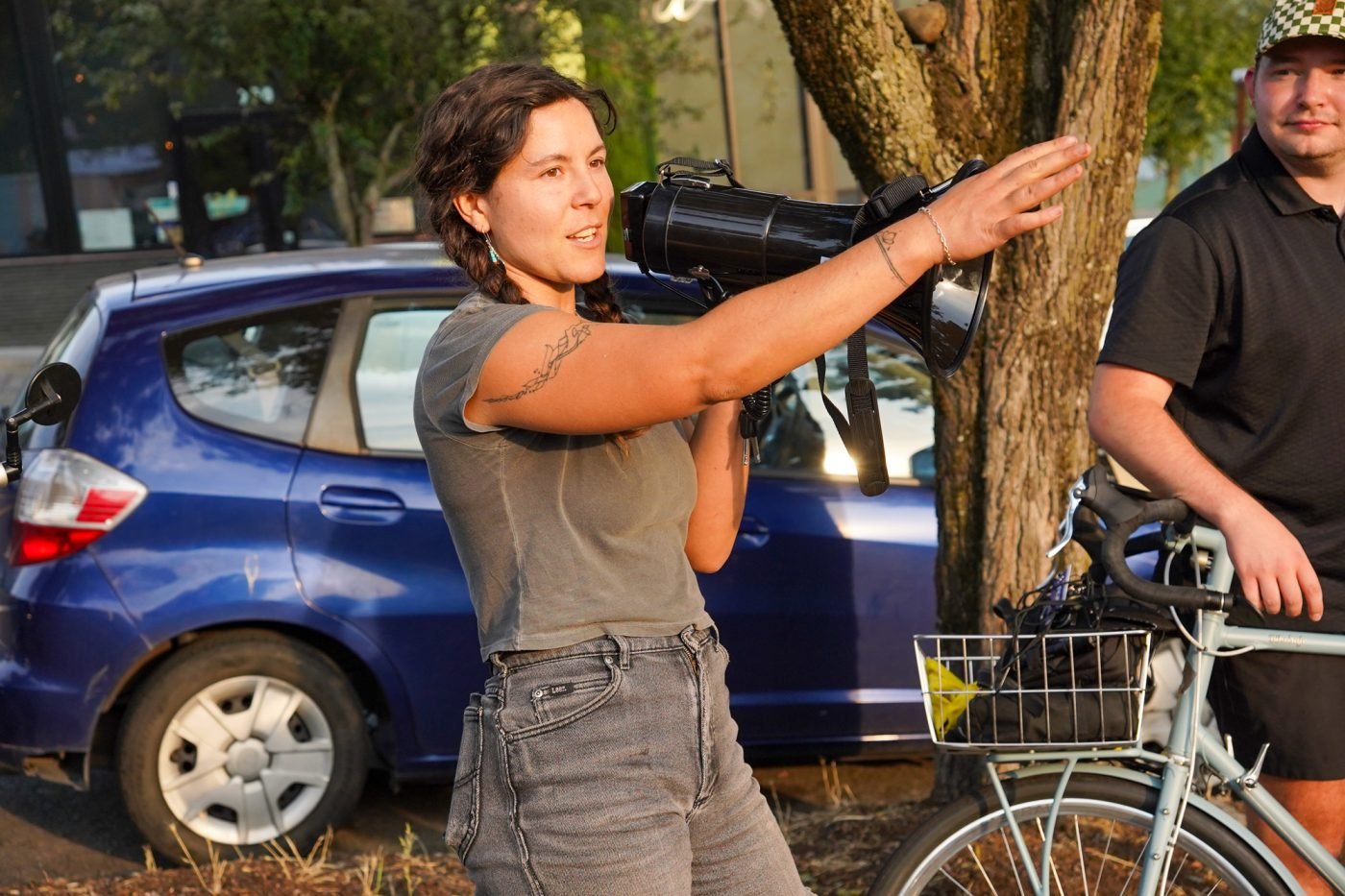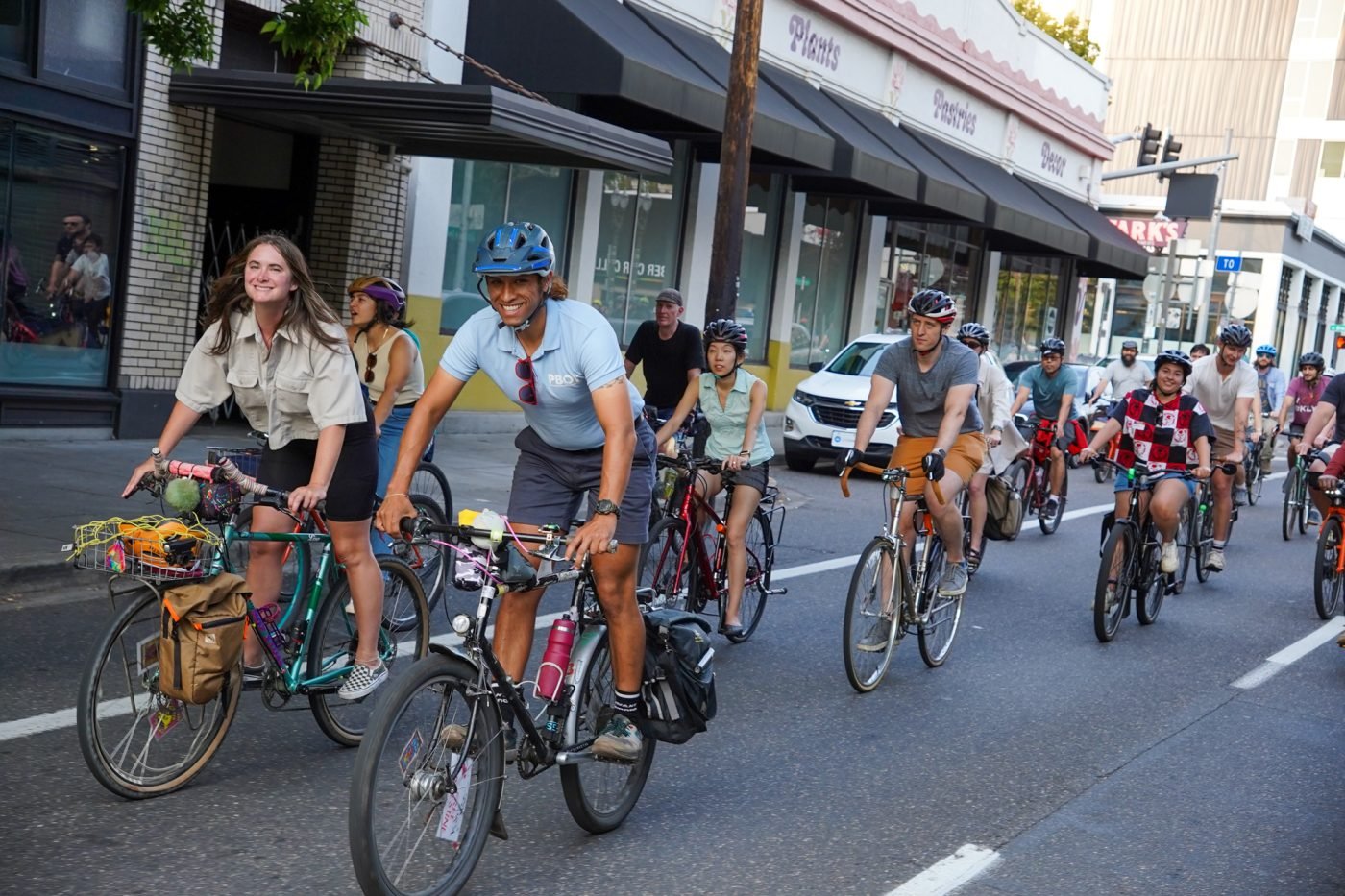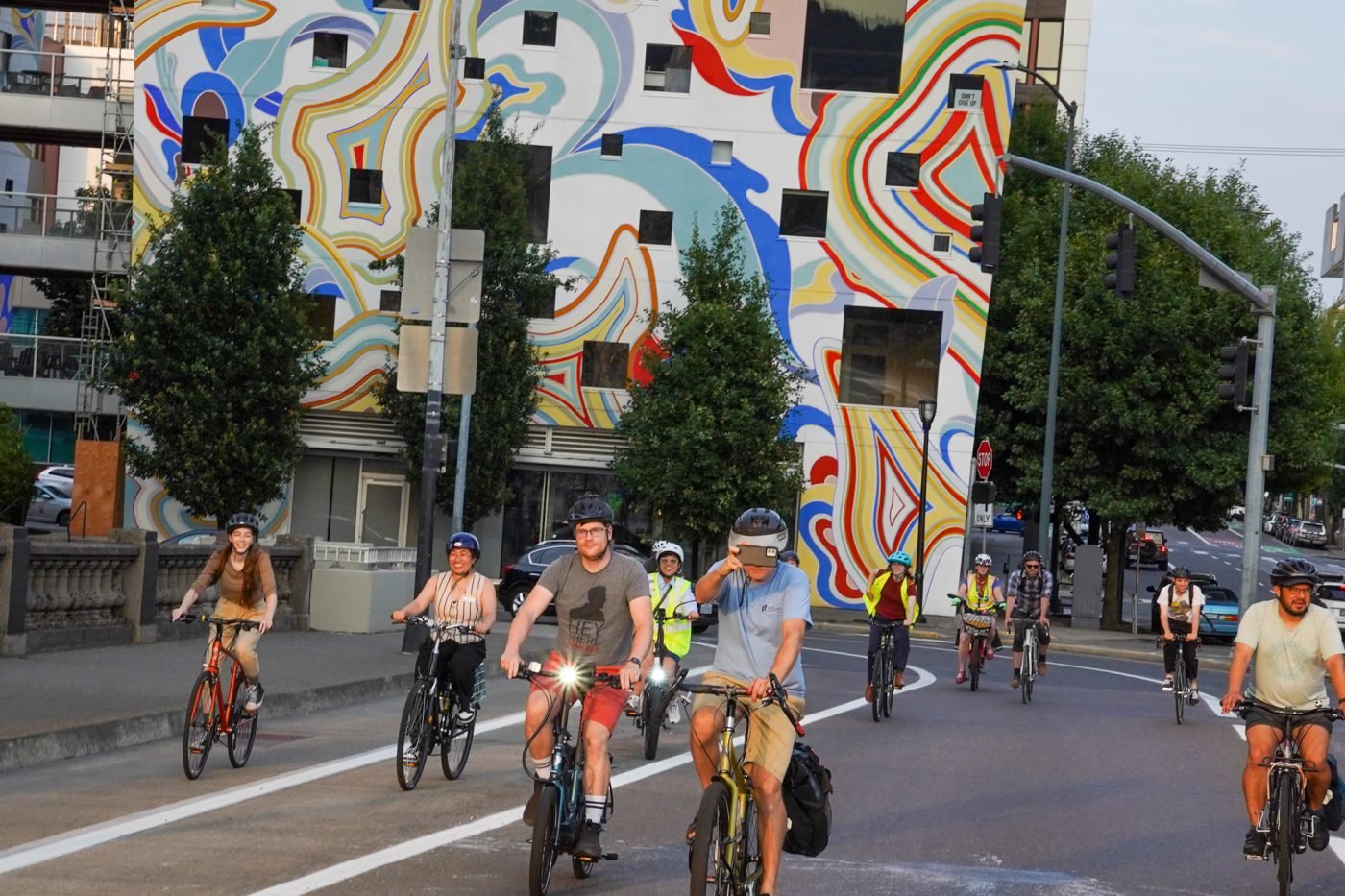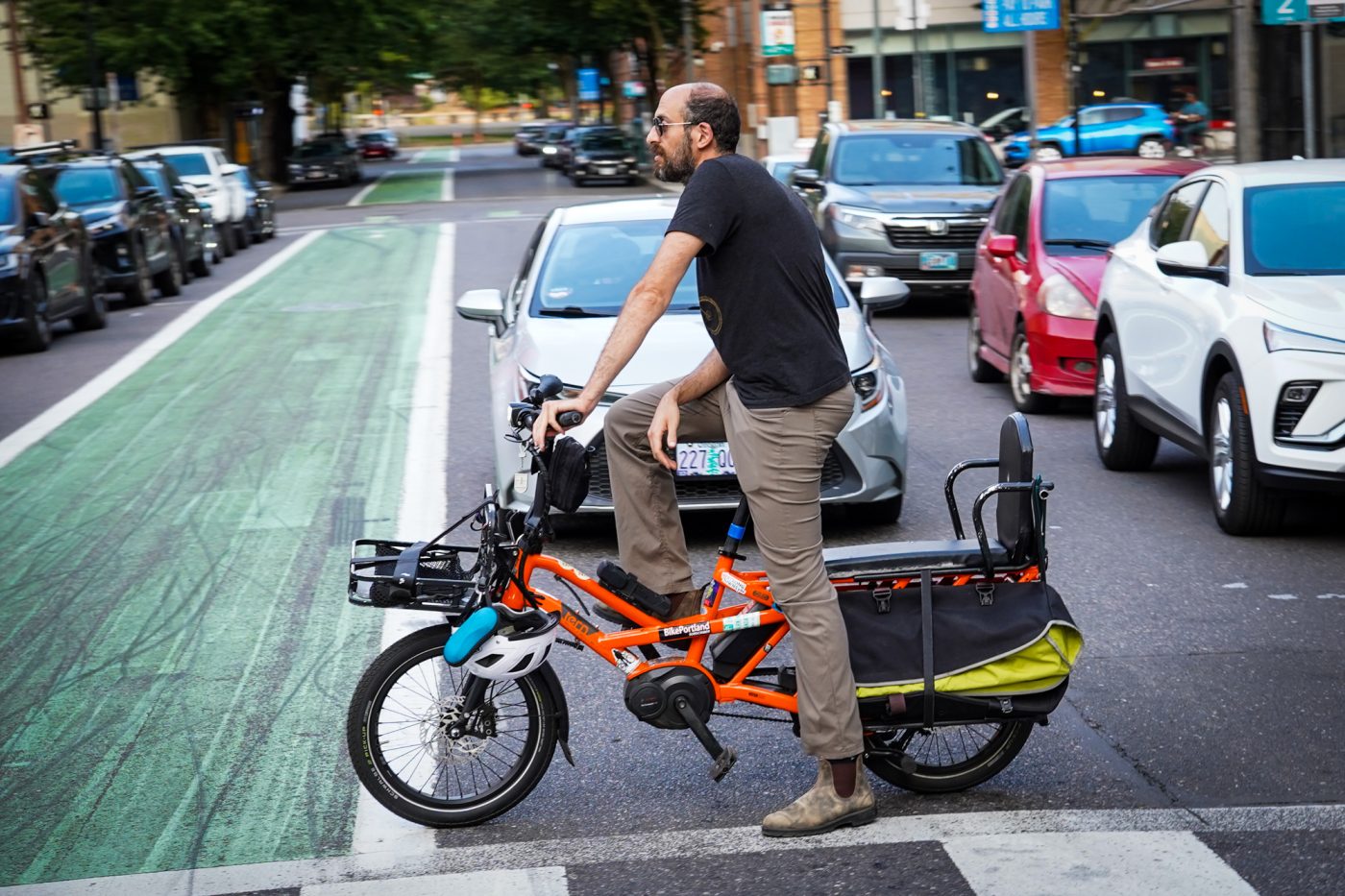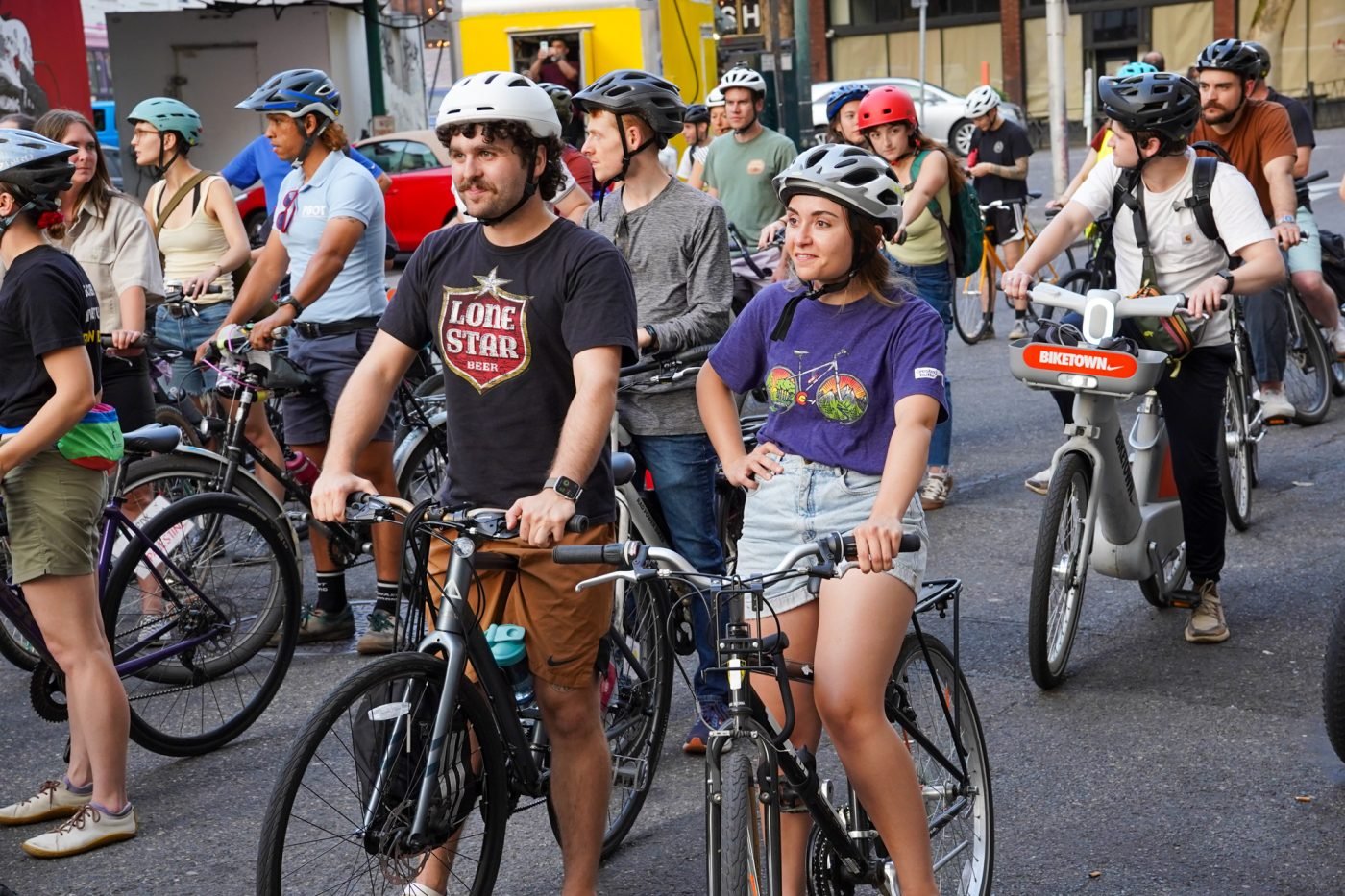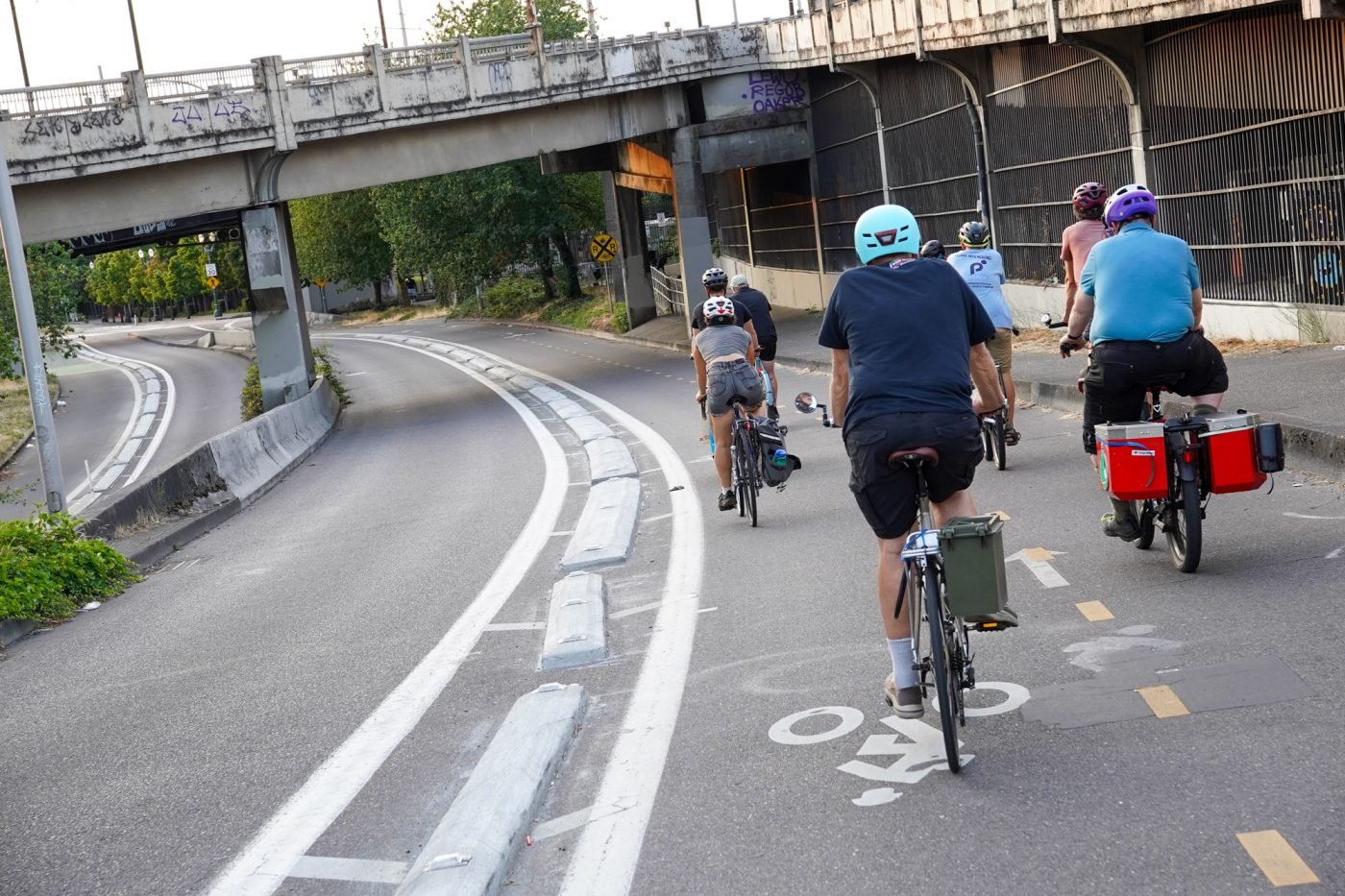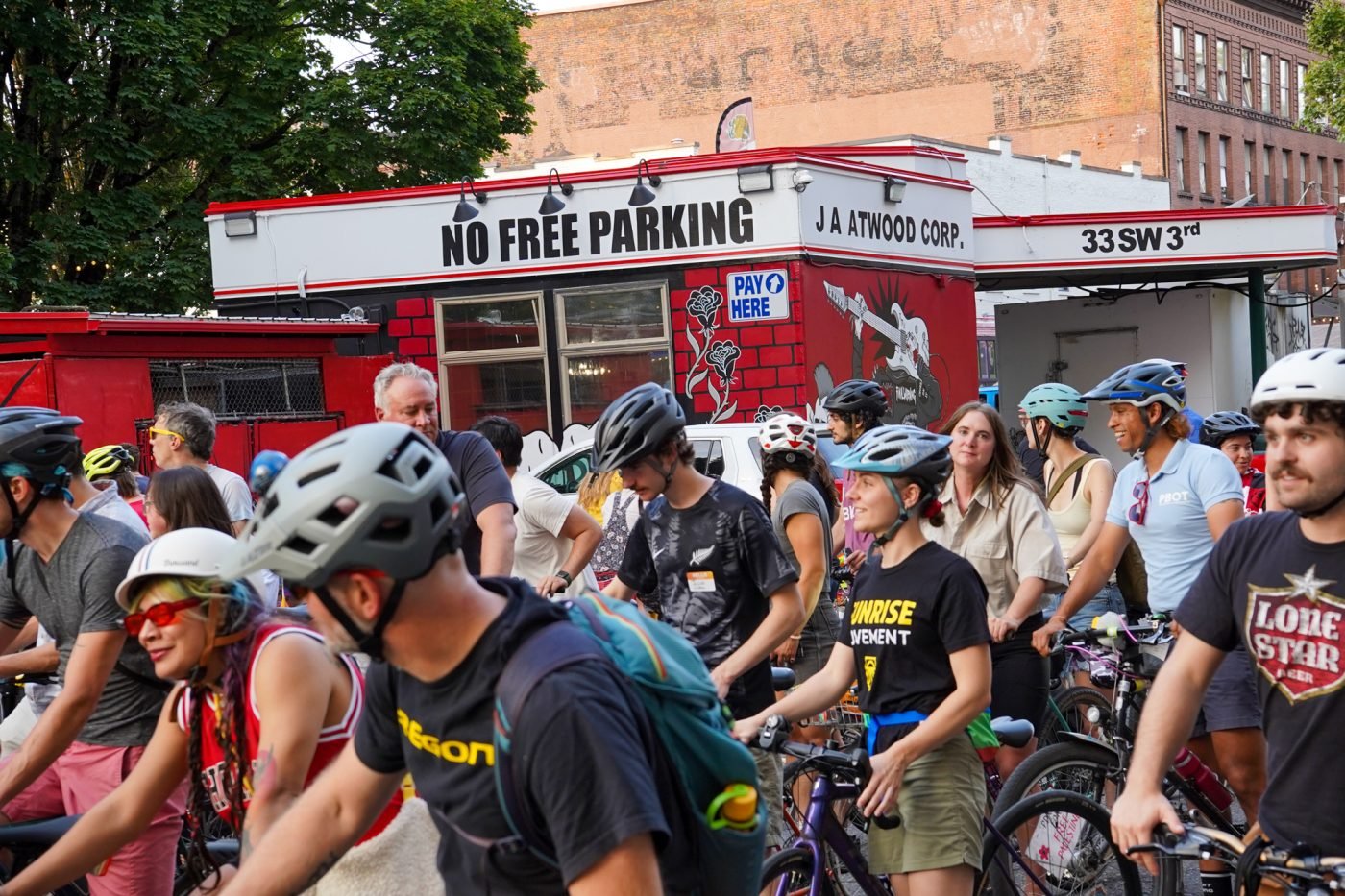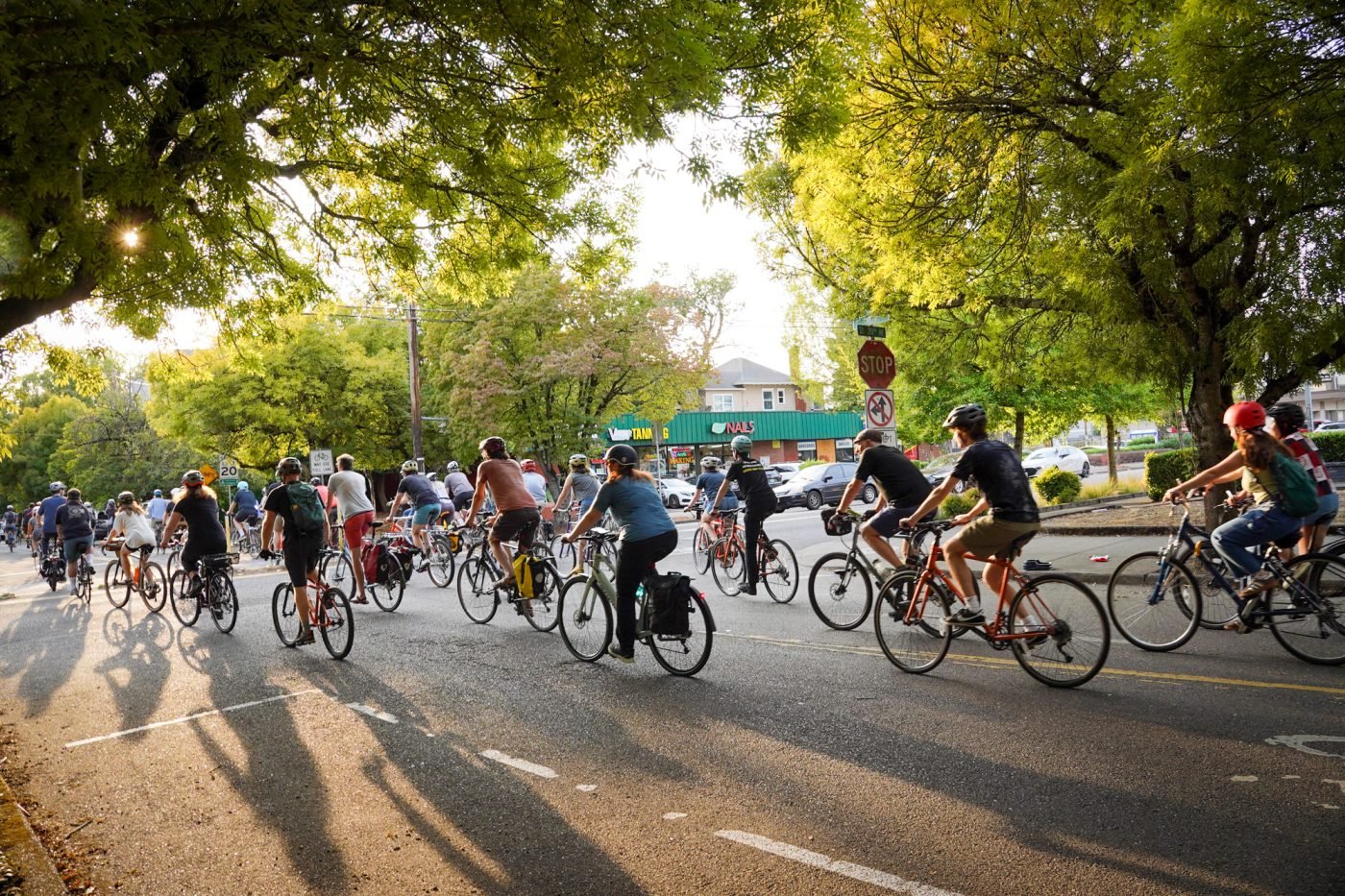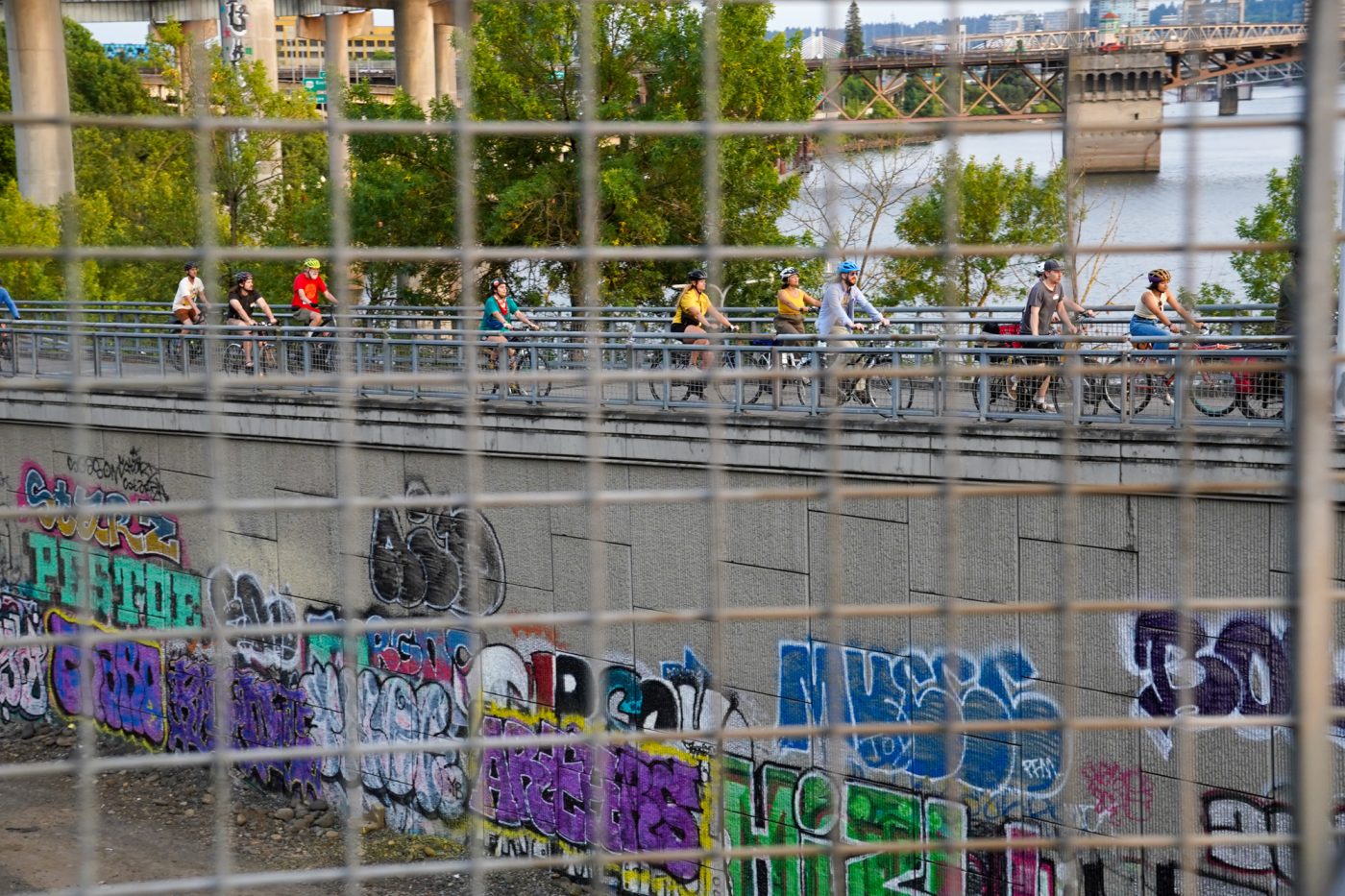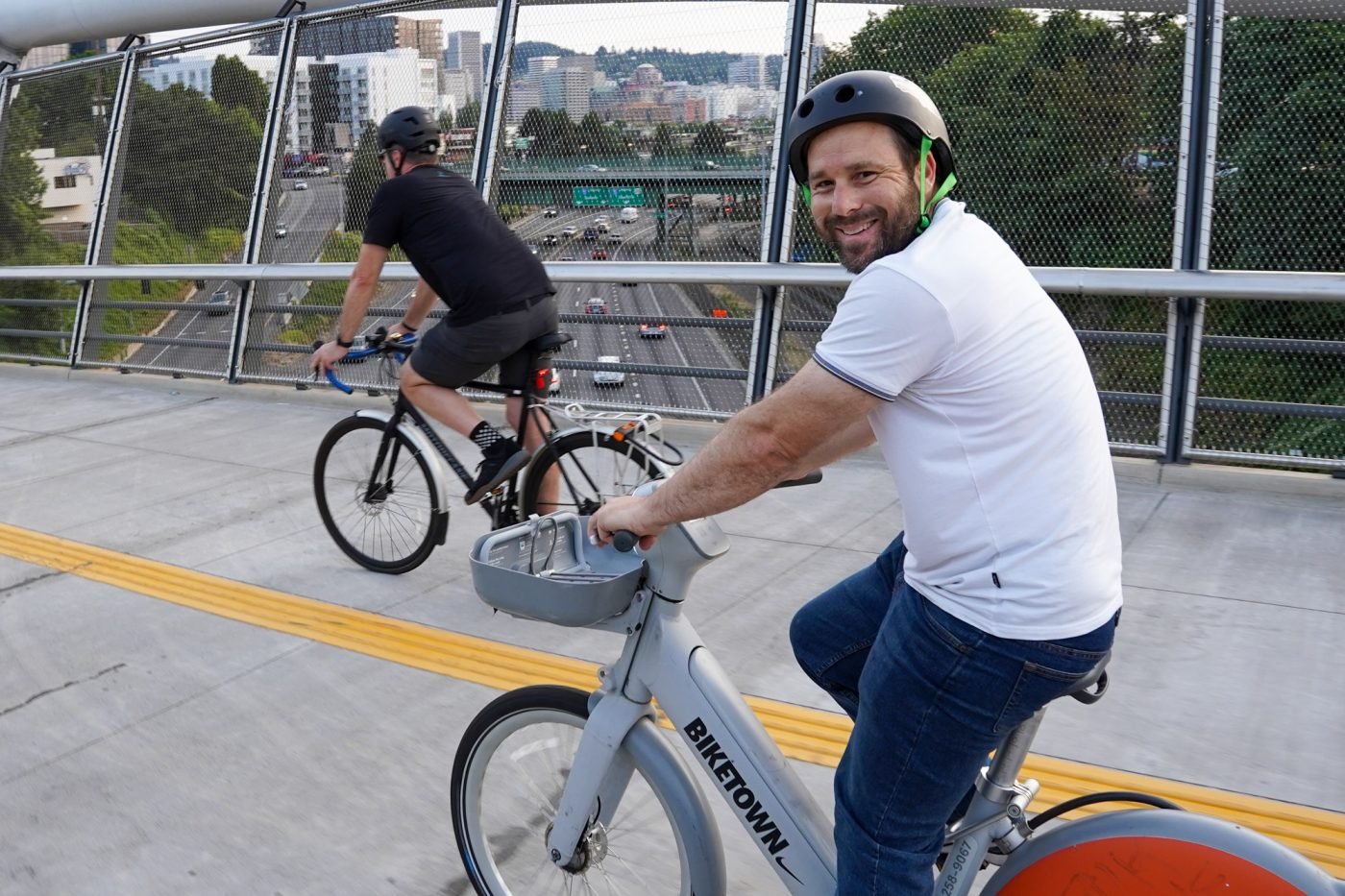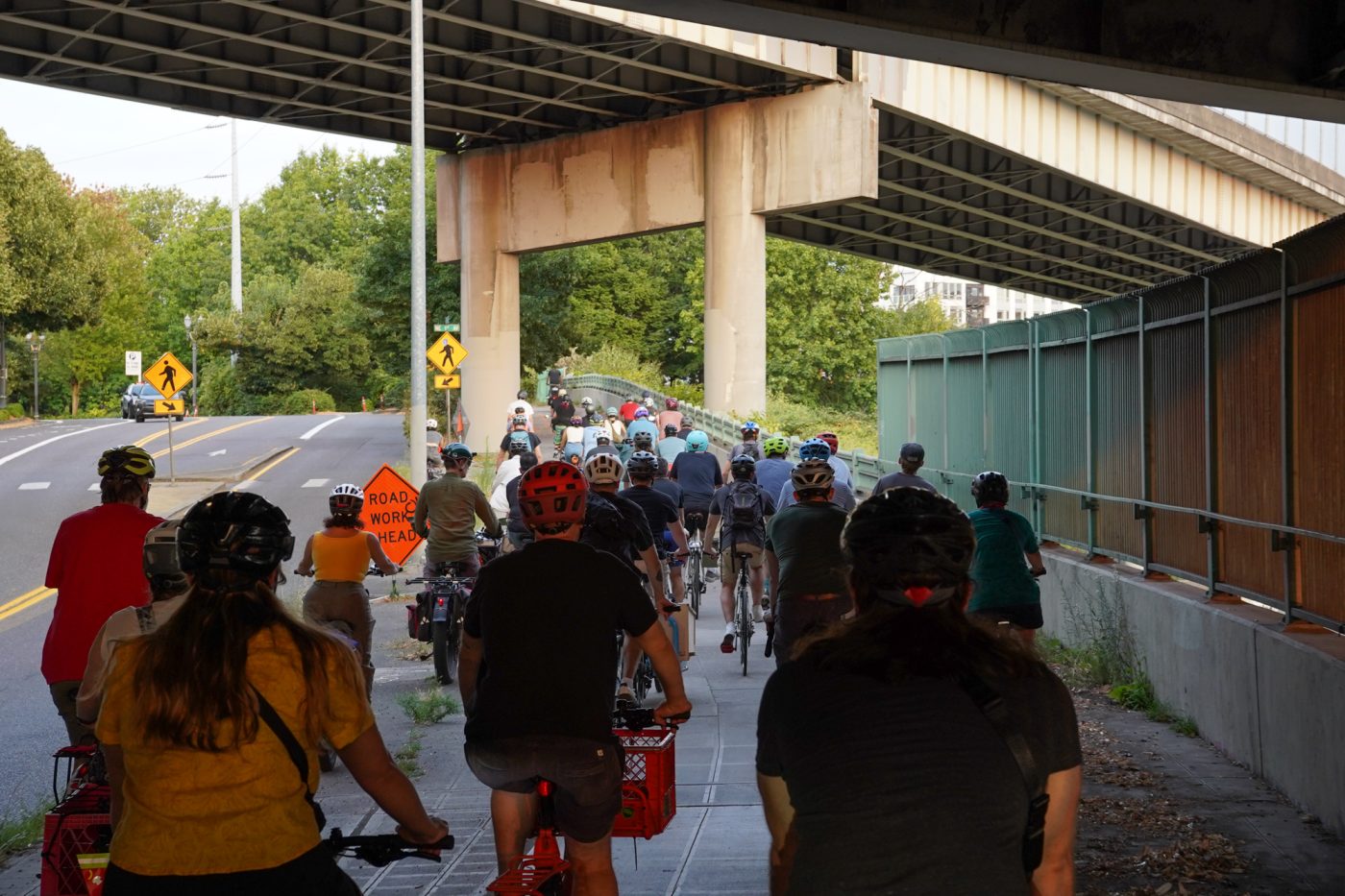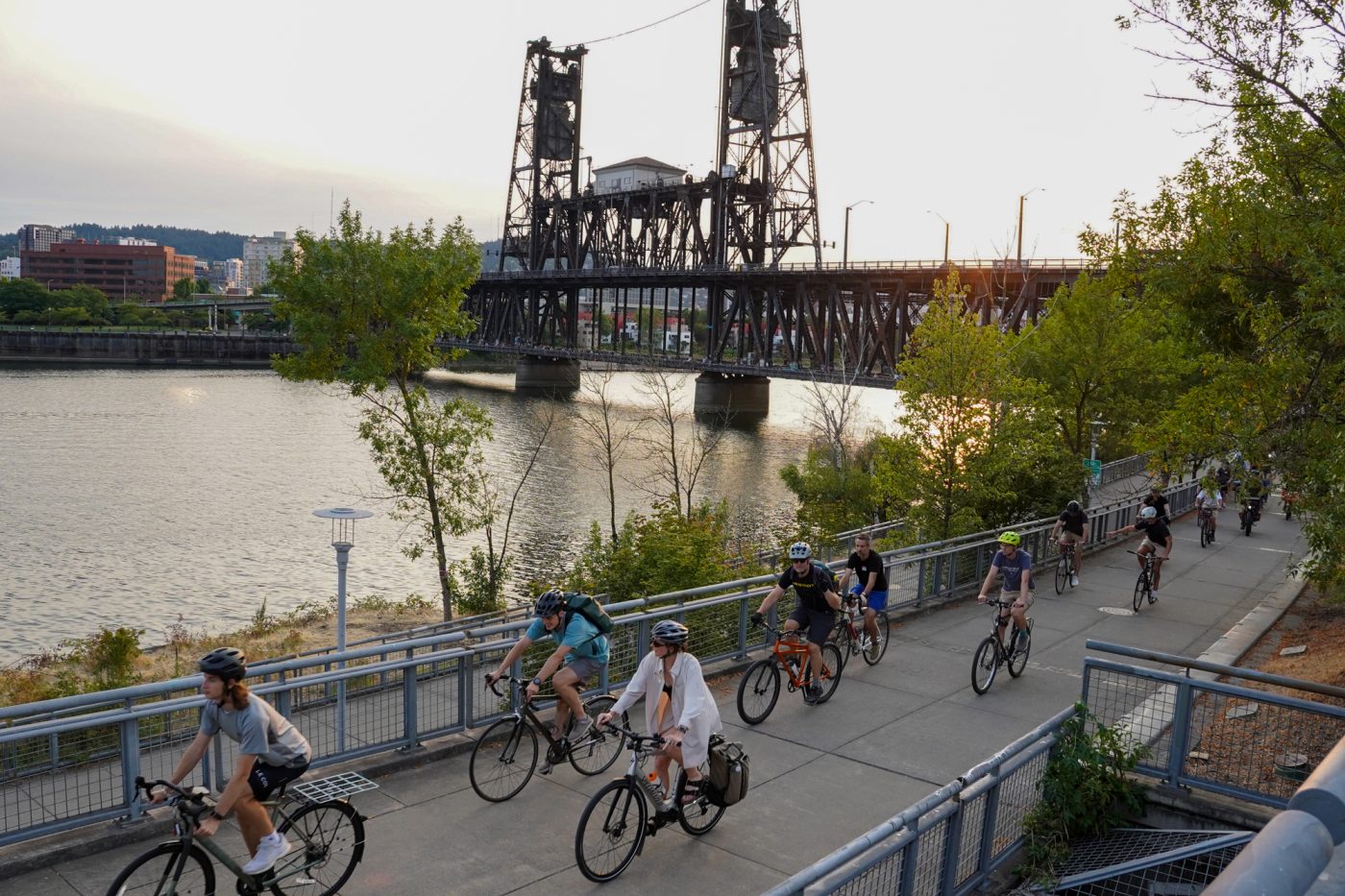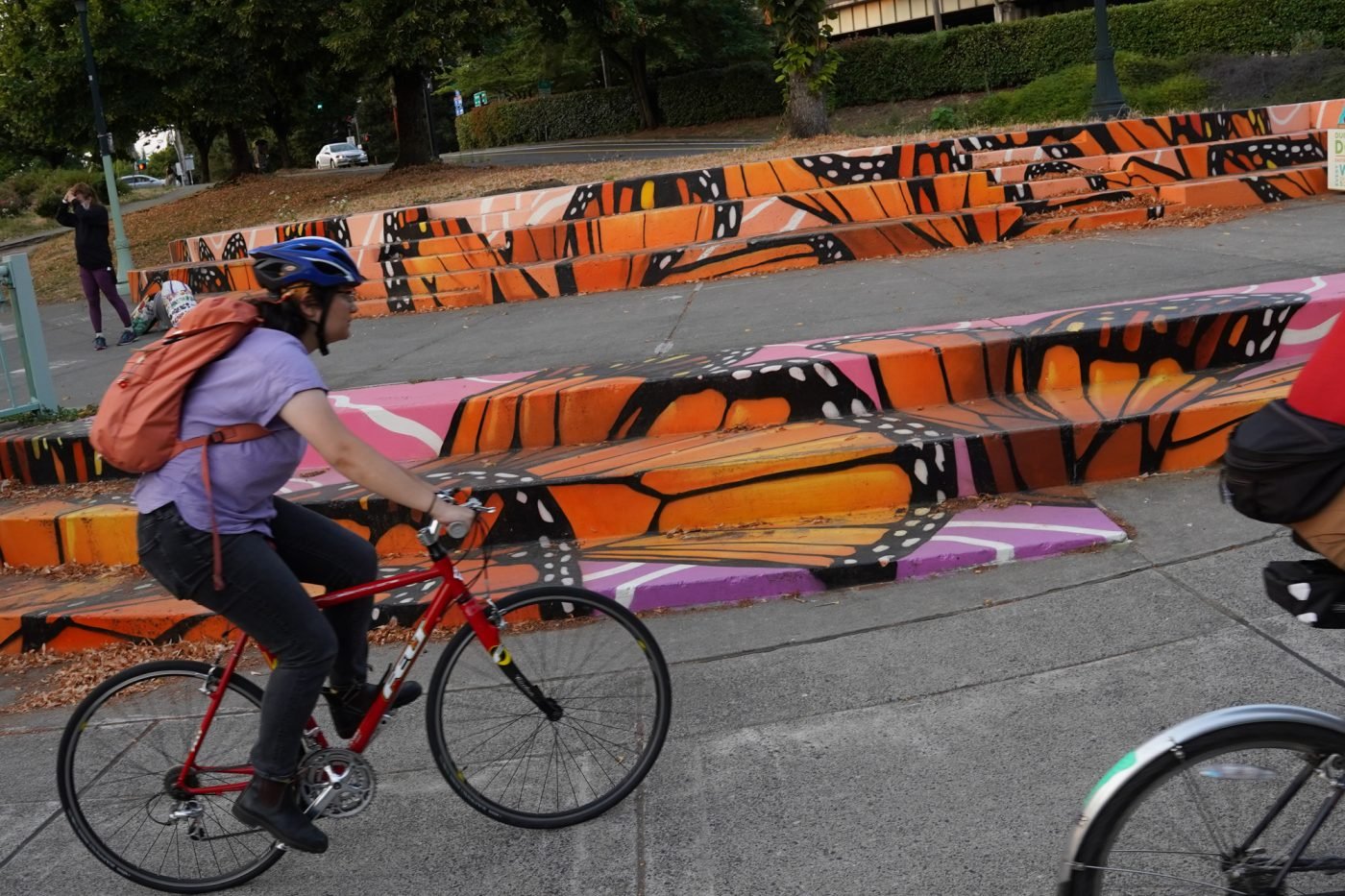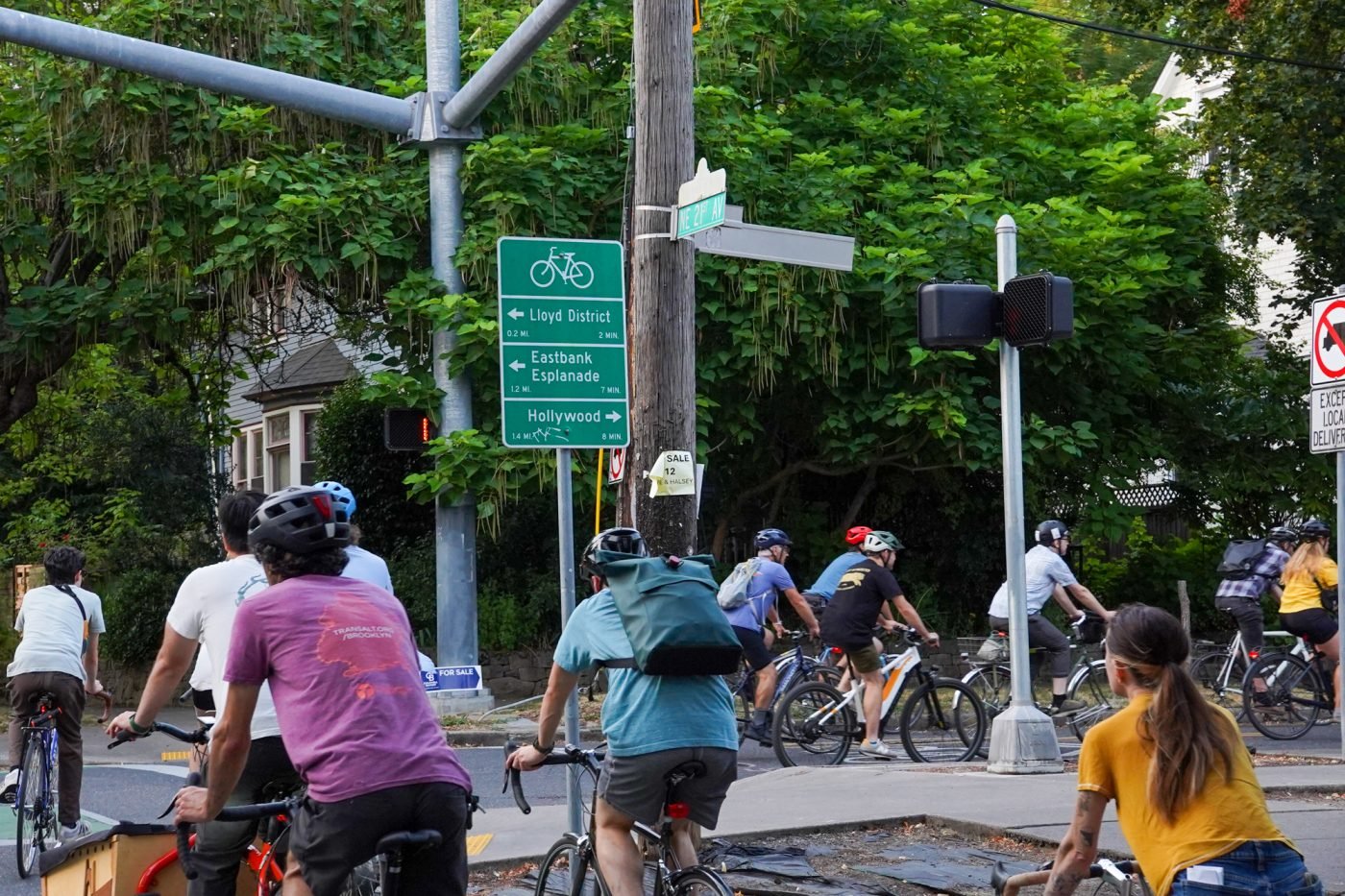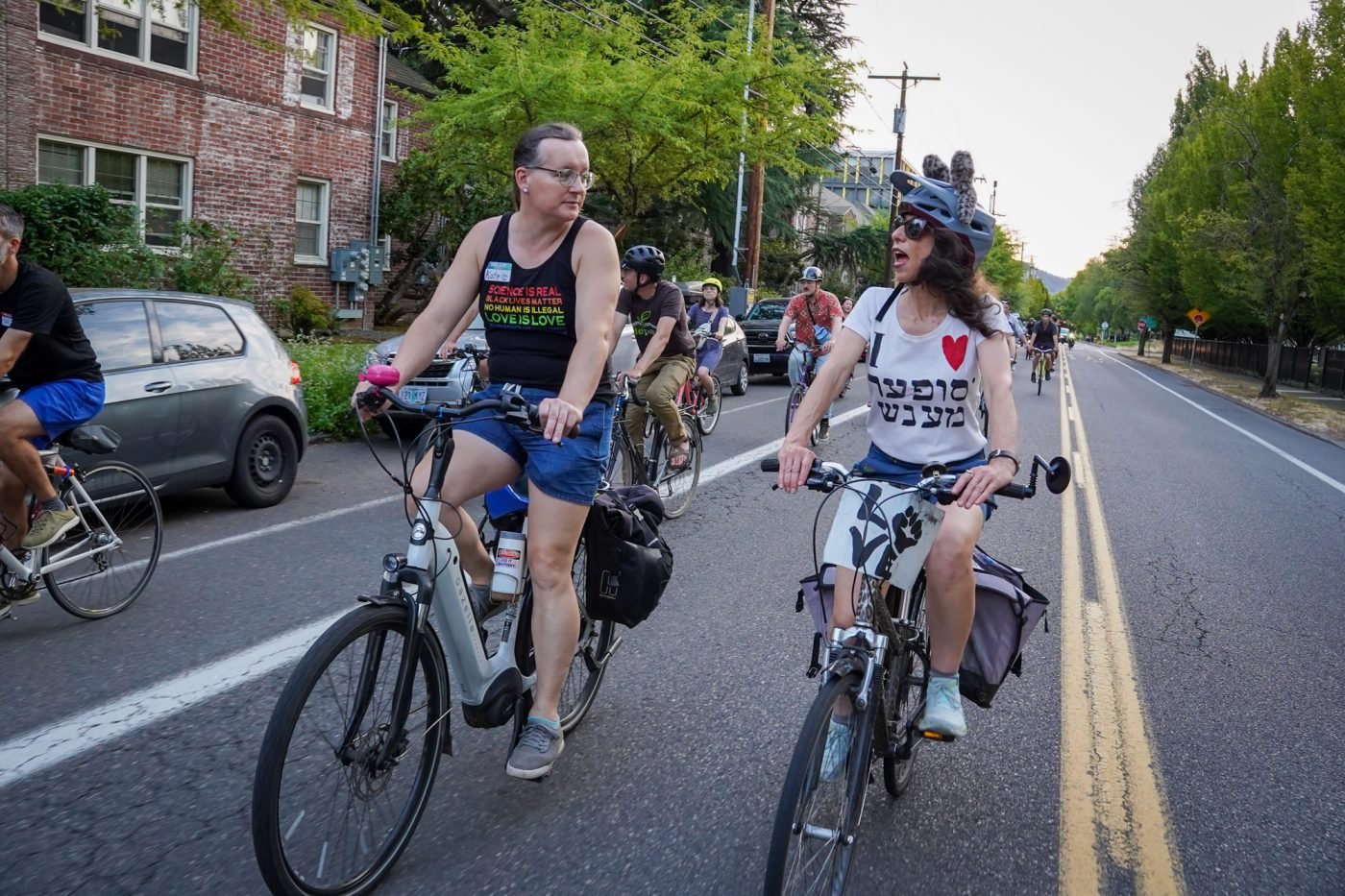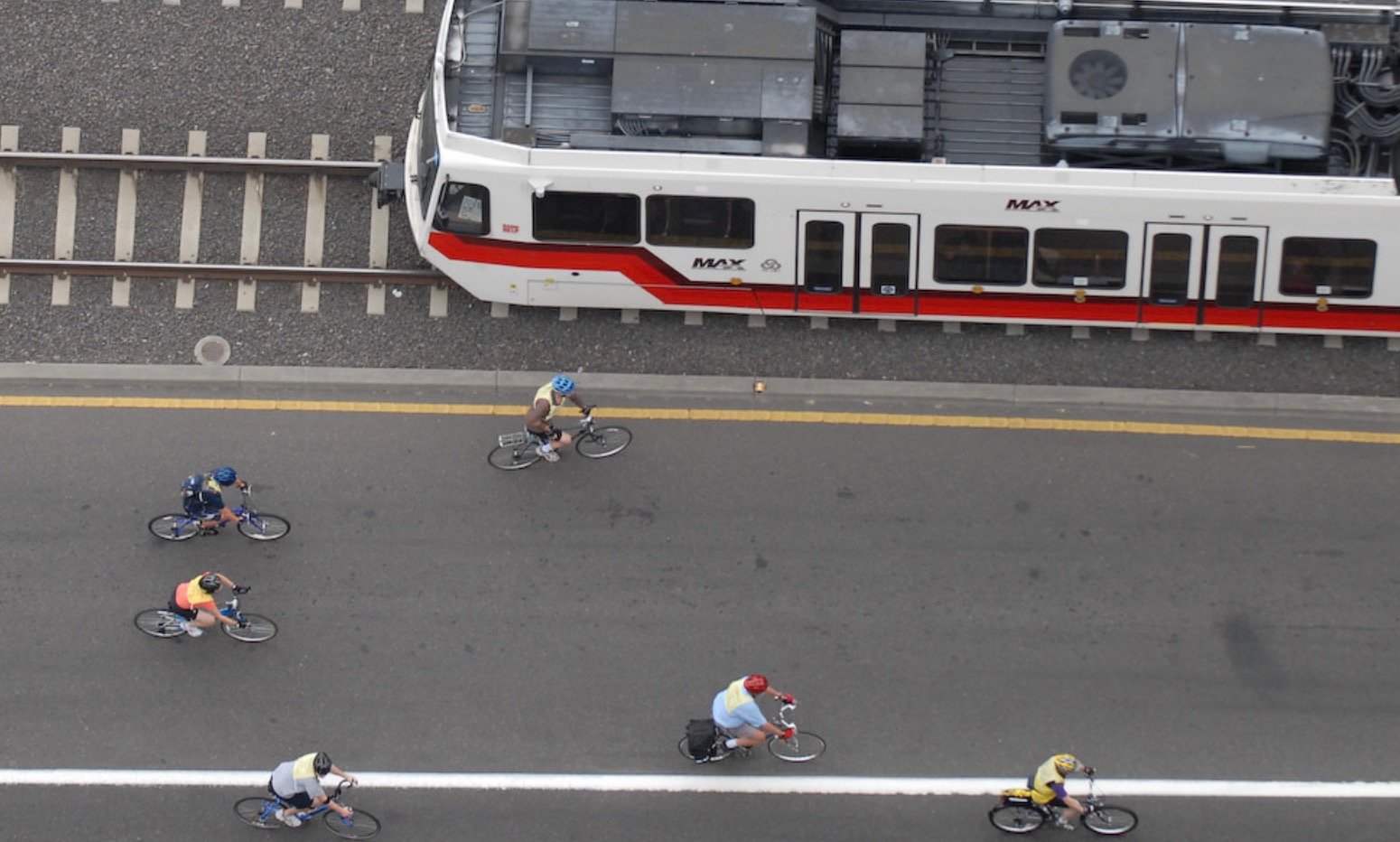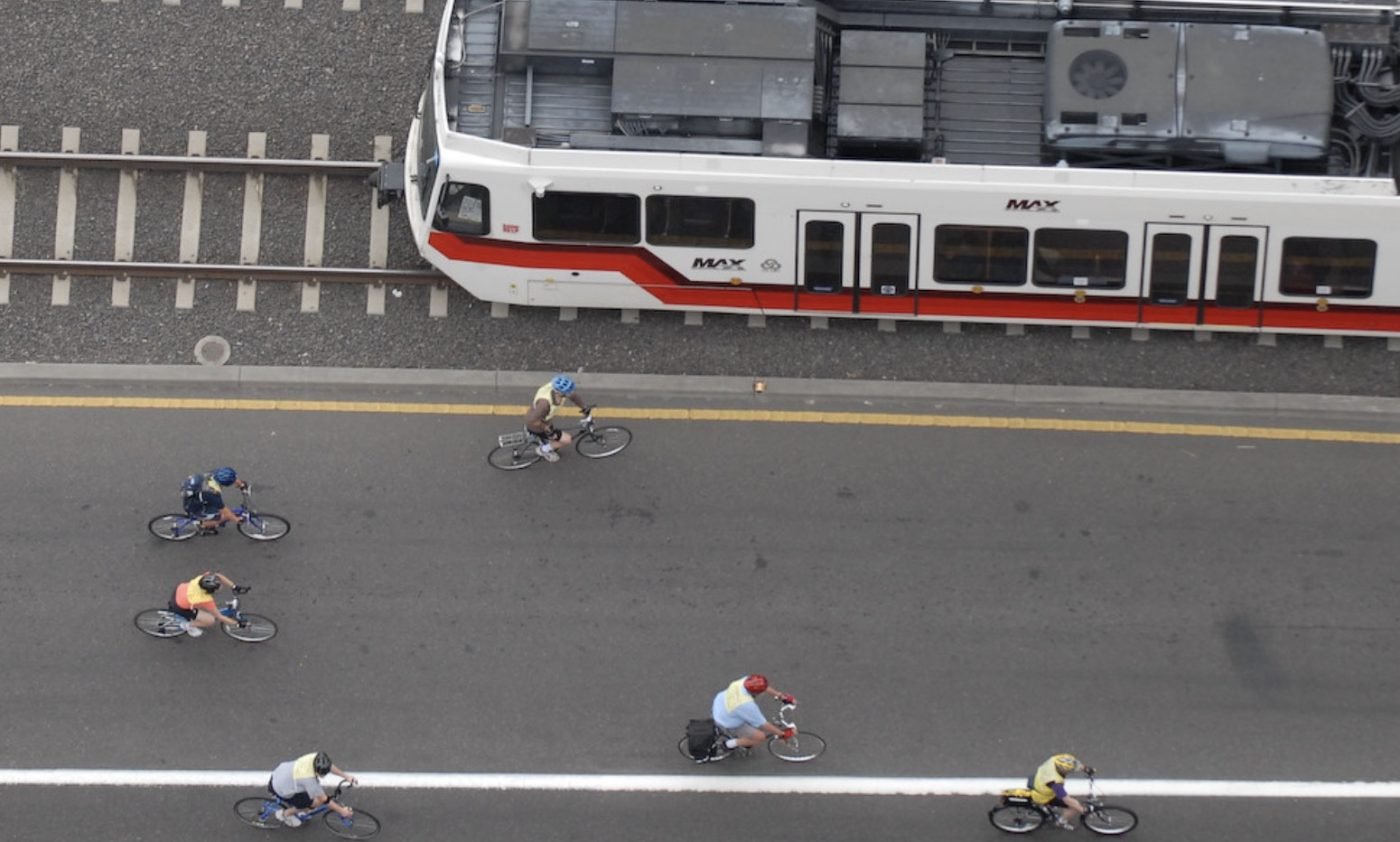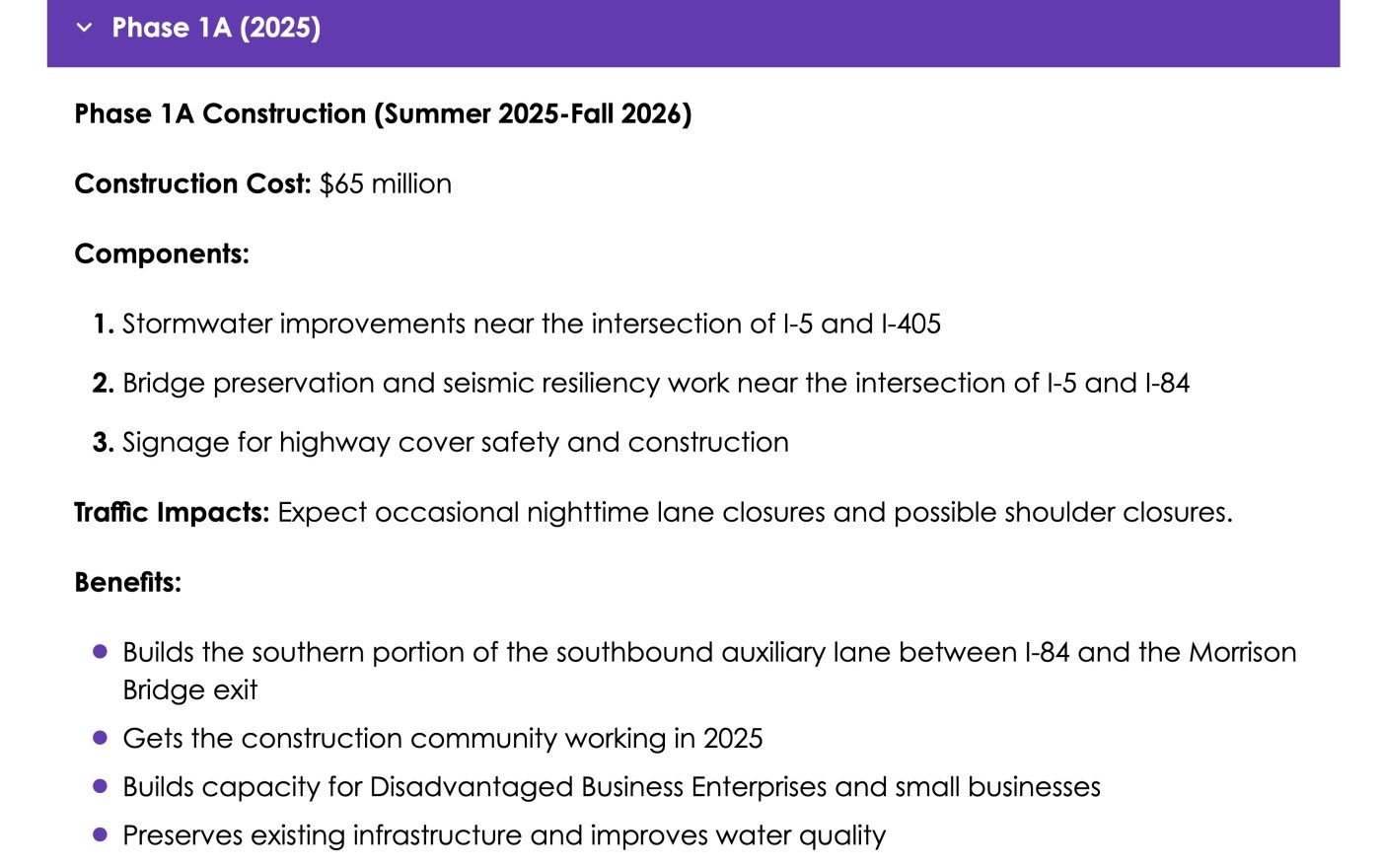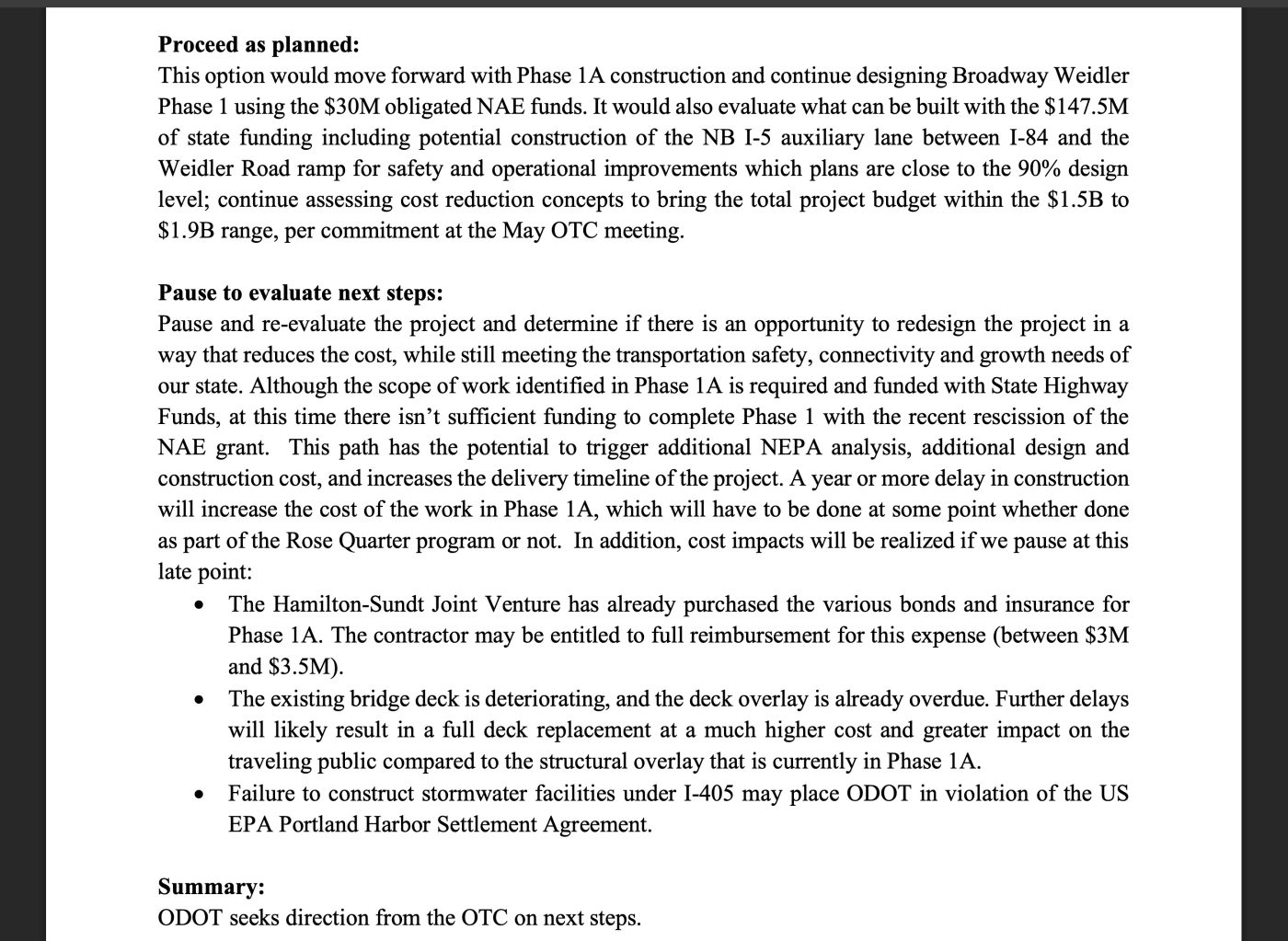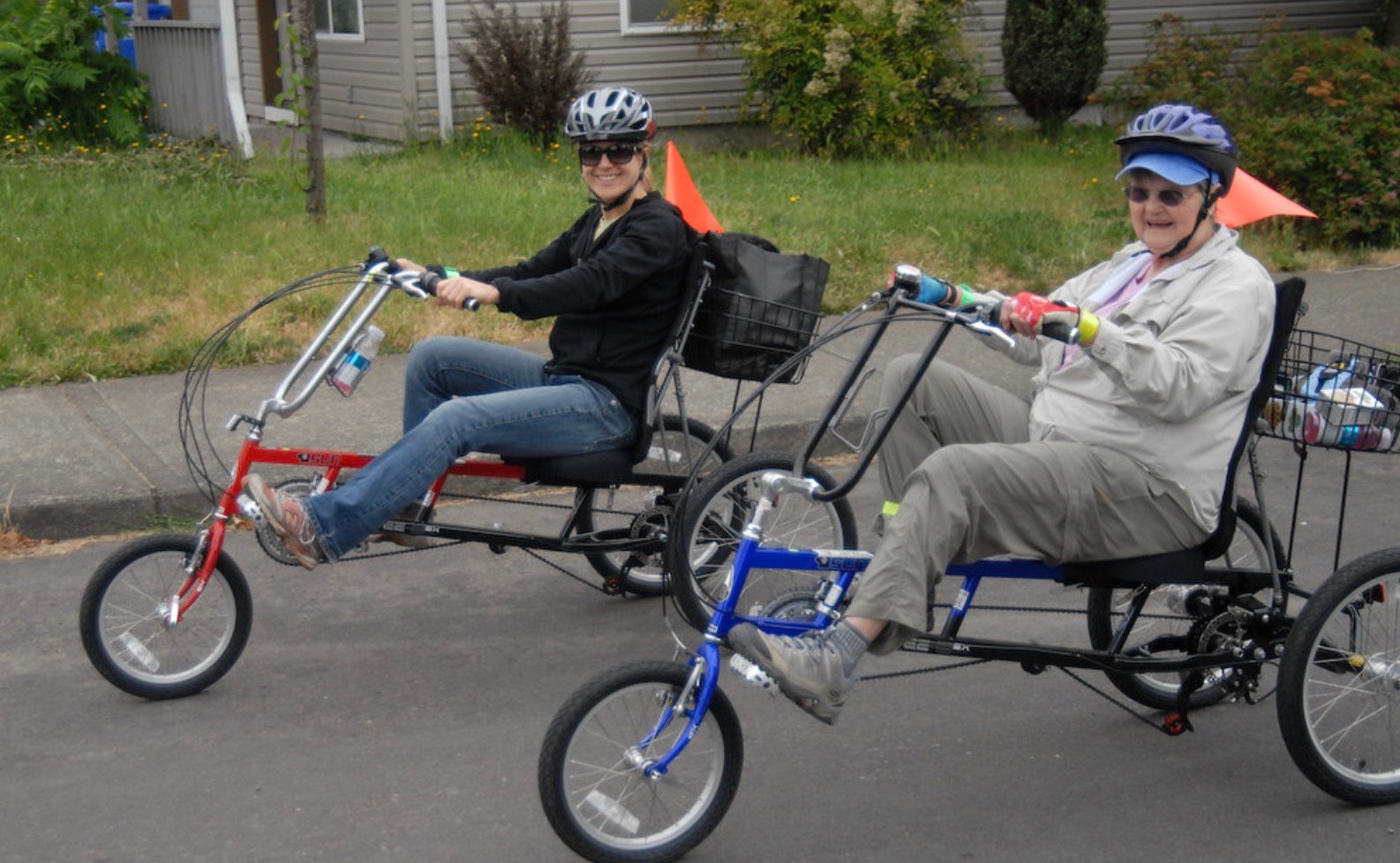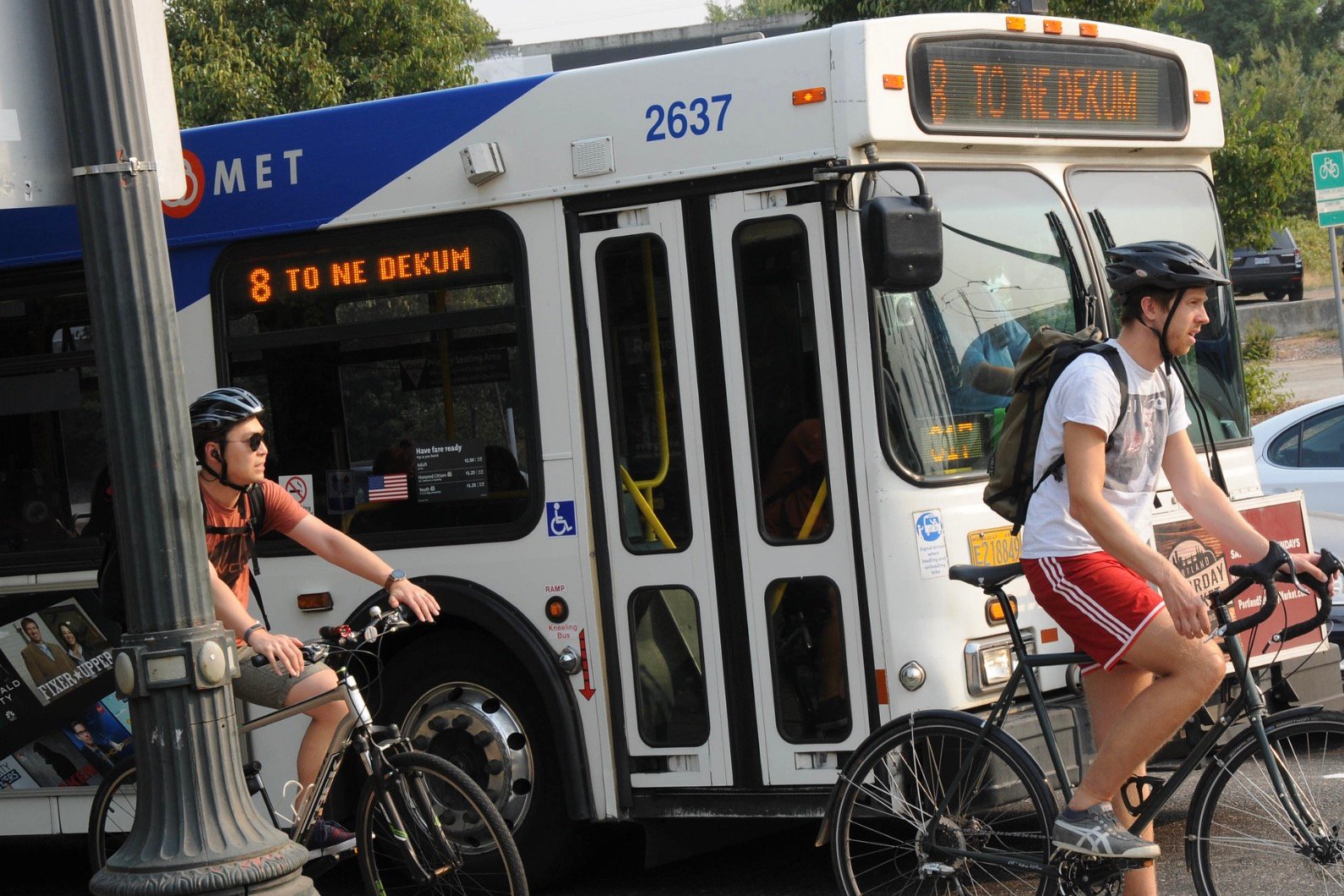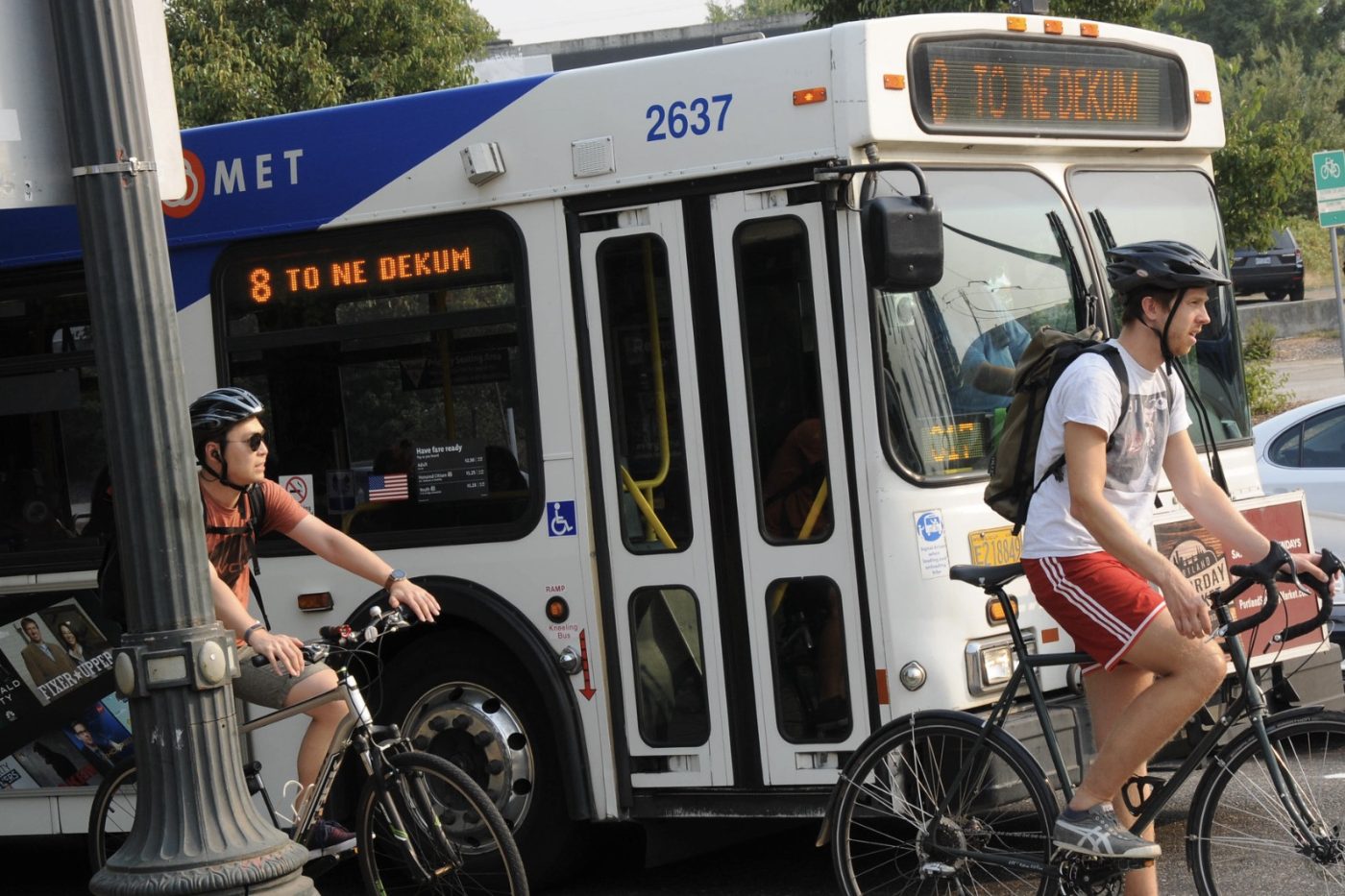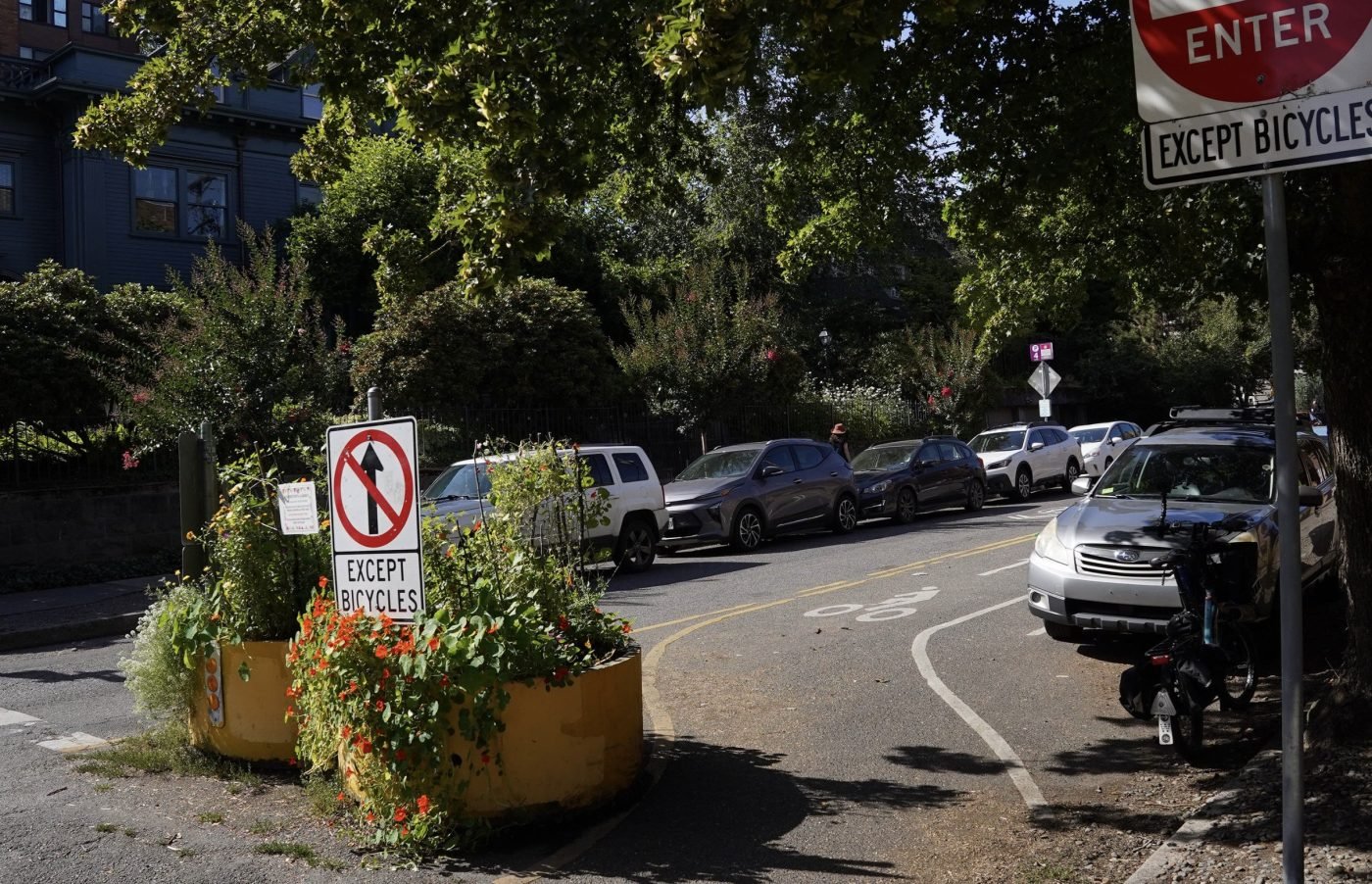
A plan to remove traffic diverters on two neighborhood greenways in northwest Portland that has been developed largely behind closed doors, appears to be moving forward. Or does it? So far there’s a lack of clarity about why they’re targeted for removal and when it might happen.
The locations in question are NW 20th and Everett and NW Johnson at 14th and 15th. In all three locations, the Portland Bureau of Transportation has installed concrete barricades that prevent car users from turning onto a street, while allowing bicycle riders through (that’s why they are also known as “modal filters,” because they filter out car traffic).
As I reported Friday, the leader of Portland Solutions, a city program created in 2024 and overseen by the Mayor’s office to address homelessness and livability issues that, emailed District 4 City Councilors and other city leaders to inform them that these diverters would be removed. “We are working diligently with [PBOT] Director [Millicent] Williams to ensure these changes occur quickly for the benefits of all community members in NW,” the email from Portland Solutions Program Director Skyler Brocker-Knapp read. The only rationale for this decision provided in the email was to make it easier for Portland Police Bureau (PPB) officers to navigate the streets because the locations of these diverters, “have been particularly problematic in terms of chronic nuisance behavior (drug dealing, vandalism, etc.).” “These were public safety requests and we appreciate partnering with PBOT on these efforts,” Brocker-Knapp wrote.
These diverters are part of a citywide strategy to reduce driving, encourage bicycling, and calm traffic. They are part of a network of neighborhood greenway streets that allow bicycle users to navigate the city in a lower-stress environment and the locations in question were vetted and recommended through a formal process known as the Northwest in Motion plan, which was adopted by City Council in 2020.
That’s why I’m curious to understand more about how the PPB and Portland Solutions are able to mandate their removal with little to no public input. So far, I haven’t heard satisfactory answers to my questions and I remain very concerned not just about the impacts of removing these diverters, but about the precedent we would set by doing so.
The official rationale given by Director Brocker-Knapp was that the PPB needs to more easily navigate these streets so they could address crime hotspots (the diverters create one-way streets for drivers). But since my story published on Friday, I’ve heard other reasons behind the desire to remove them.
A Portland Solutions spokesperson shared with me in a phone call that the removal was, “An ask that came from PPB and PEMO [Public Environment Management Office, another program under the Portland Solutions banner] based over several months of conversations with the community.” I emphasized “community” because that’s an additional rationale not offered in Brocker-Knapp’s email and it speaks to reasons for the removal that go beyond making PPB patrols easier. Those “conversations” referenced by the Portland Solutions spokesperson likely happened at twice-monthly meetings of PEMO’s Problem Solver Network, which the city describes as, “an initiative to address community public realm issues across the city.”
The same spokesperson went on to tell me that their office heard about bicycle riders who are were afraid of using NW Johnson between 15th (where the diverter is) and 16th because of general safety concerns. According to them, the combination of a dark underpass and lack of auto users (due to the diverter), equates to a lack of “eyes on the street” and increases cyclists’ sense of danger. From what I’ve learned working on this story, some of the people behind this diverter removal plan believe having more drivers on these streets will increase visibility and make the streets safer. That line of thinking is not supported in any city planning document and goes against the City’s adopted principles of Vision Zero.
To better understand the issues surrounding these diverters, I visited NW Johnson and NW 20th over the weekend.



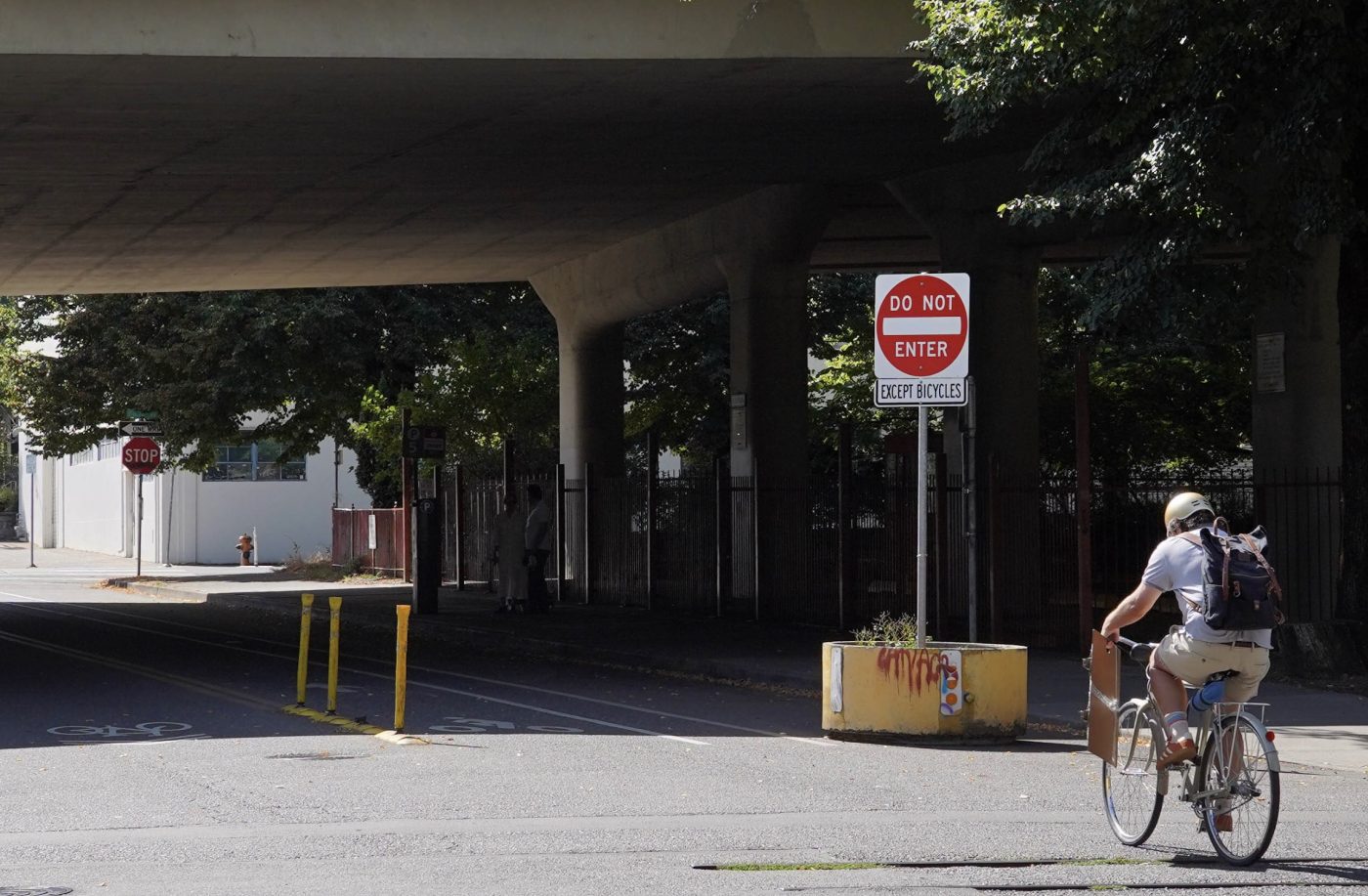
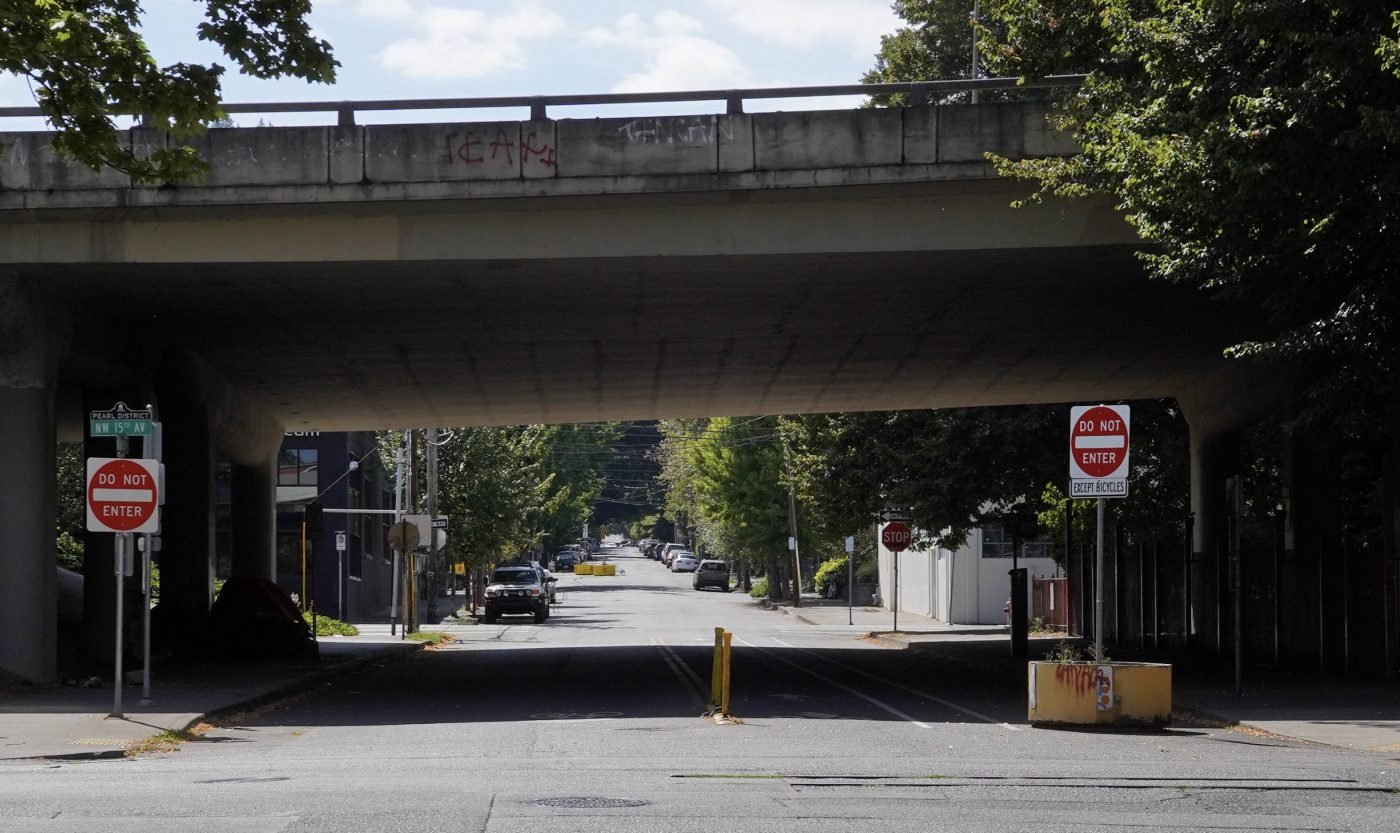

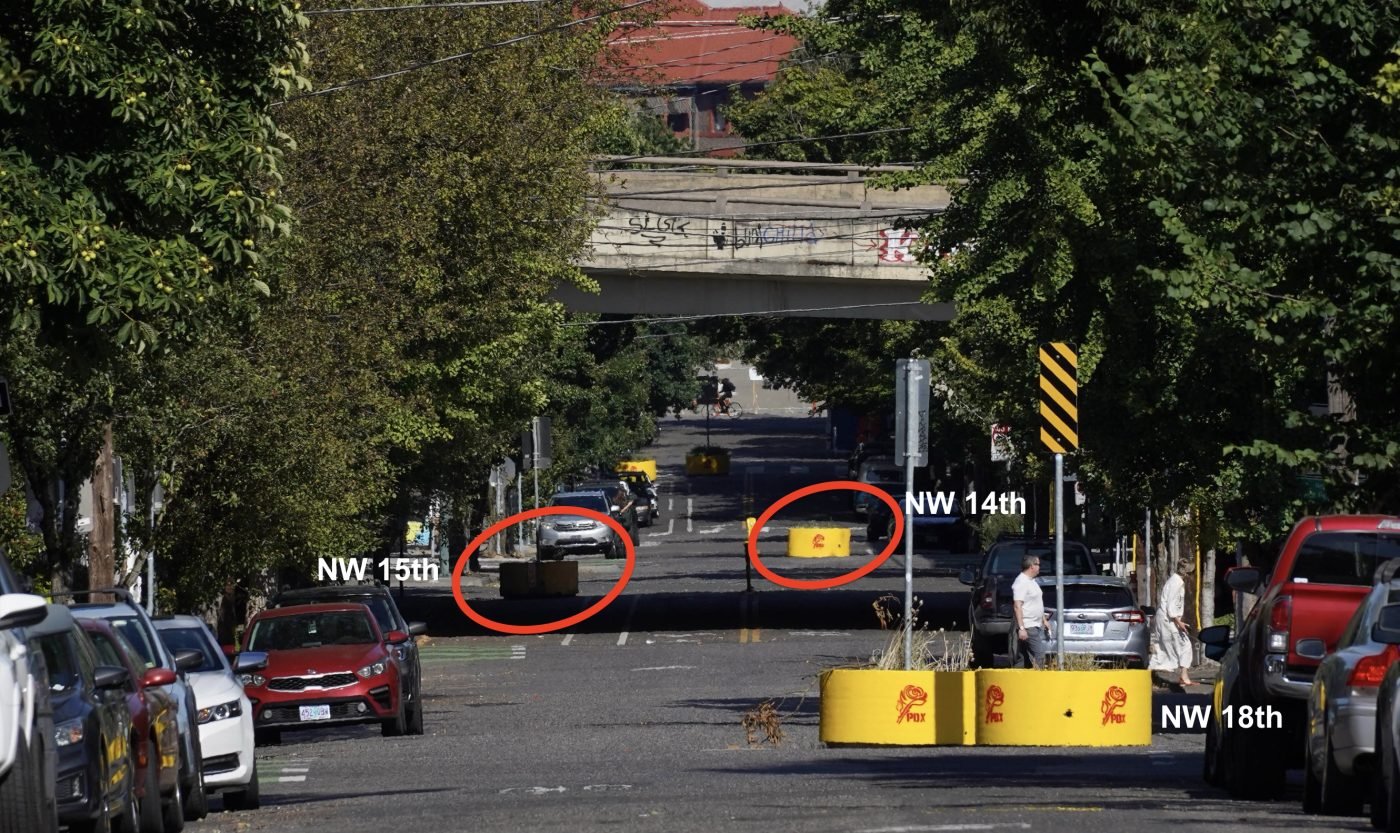
NW Johnson between 14th (the old REI) and 15th was very quiet. There were more bicycle riders than car drivers using the street in the 15 minutes I was there. And all the bicycle riders used the bike lane adjacent to the diverters. There’s just one diverter at 15th, which means there’s ample space on the street for a police officer to drive through in either direction. I also noted how these diverters are part of a strategic, alternating series of one-ways designed specifically to reduce car trips. Prosper Portland’s Broadway Corridor Plan says the neighborhood greenway is a key part of the development’s goal to minimize car traffic on NW Johnson when it is extended through the site to connect to Union Station. “Neighborhood greenways should be developed on NW Johnson Street,” the plan reads, “with volume and speed management features that limit the amount of auto traffic using the street.”
If these diverters on Johnson are removed, it would defeat the purpose of the neighborhood greenway — which is by definition supposed to remain under a specific threshold of cars per day (1,000 cars per day is the target).
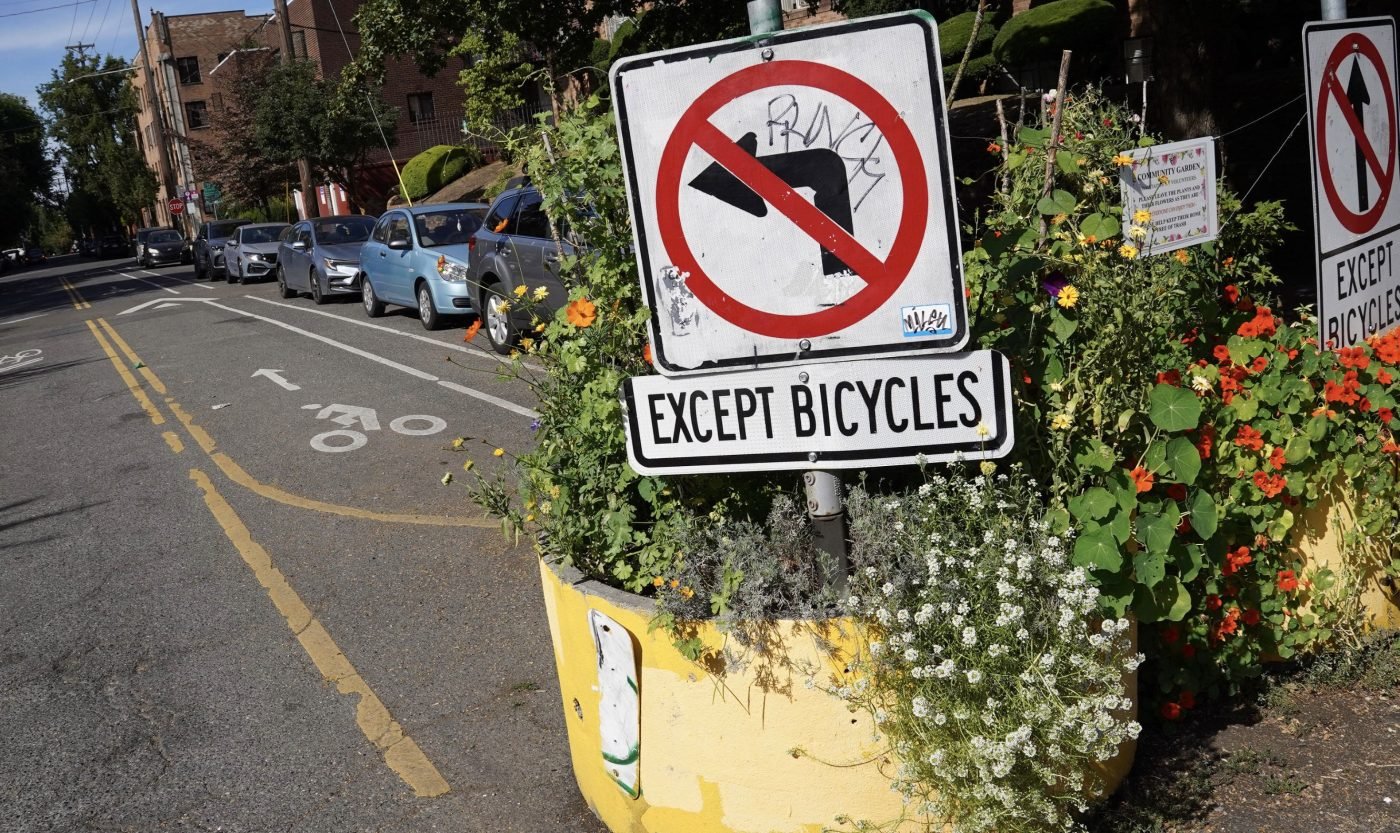
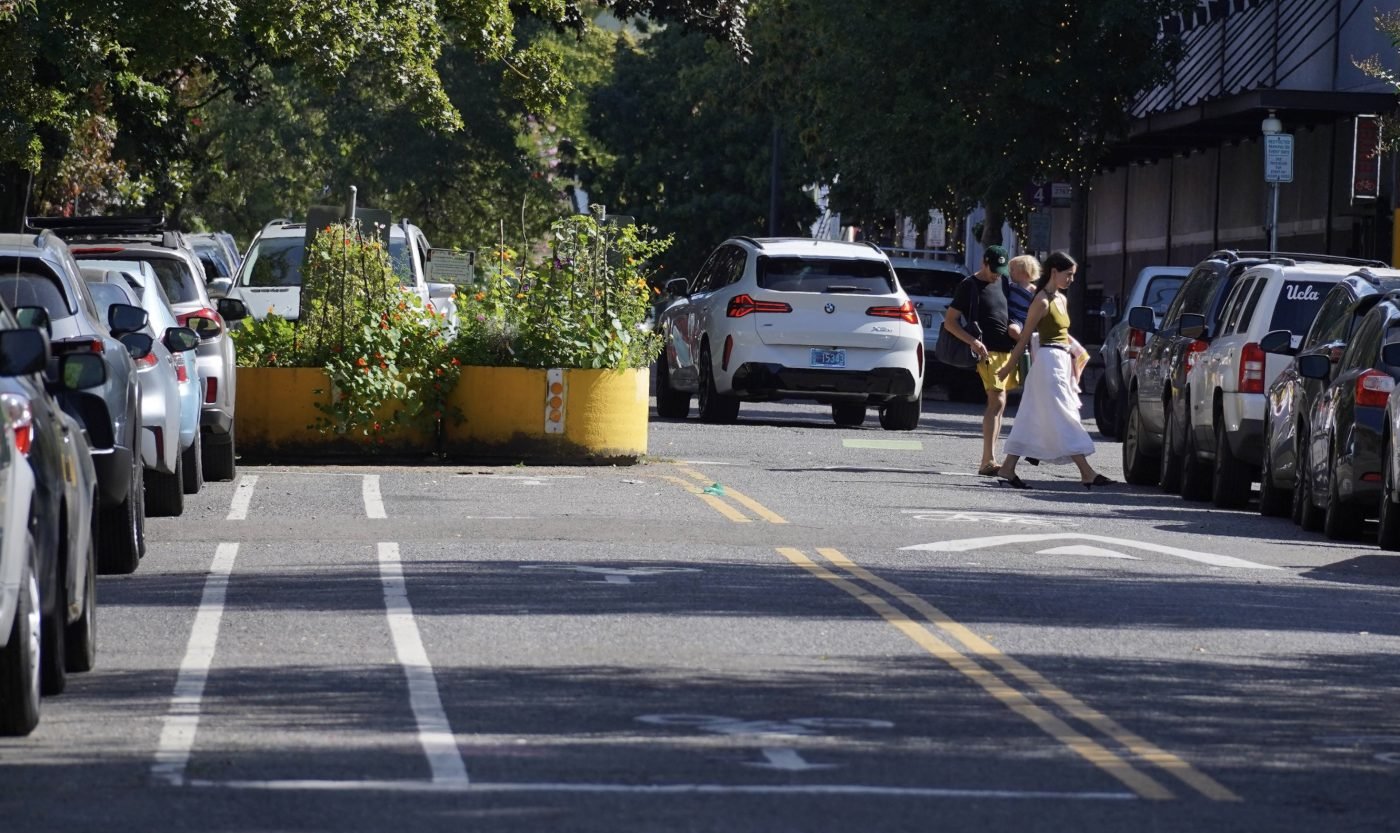
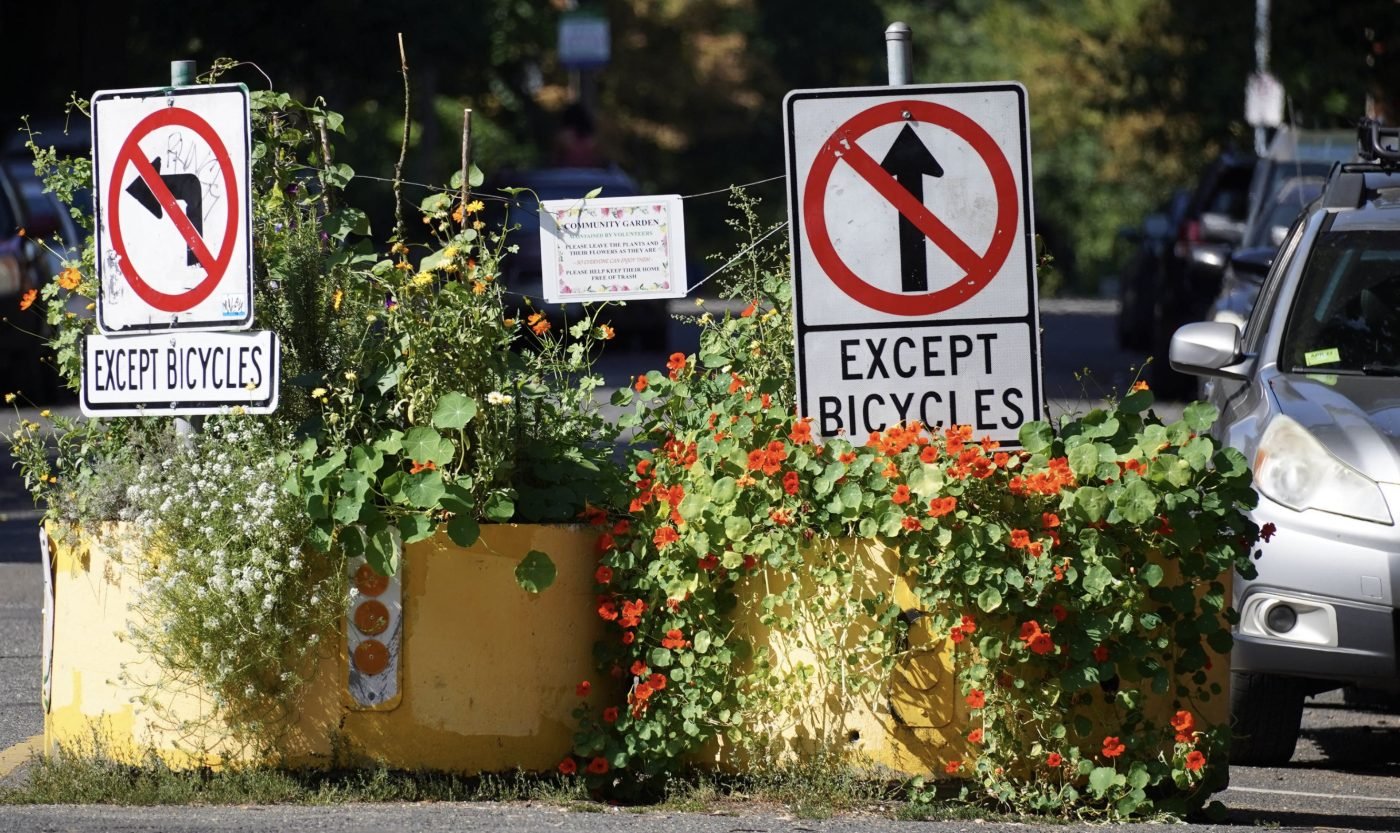

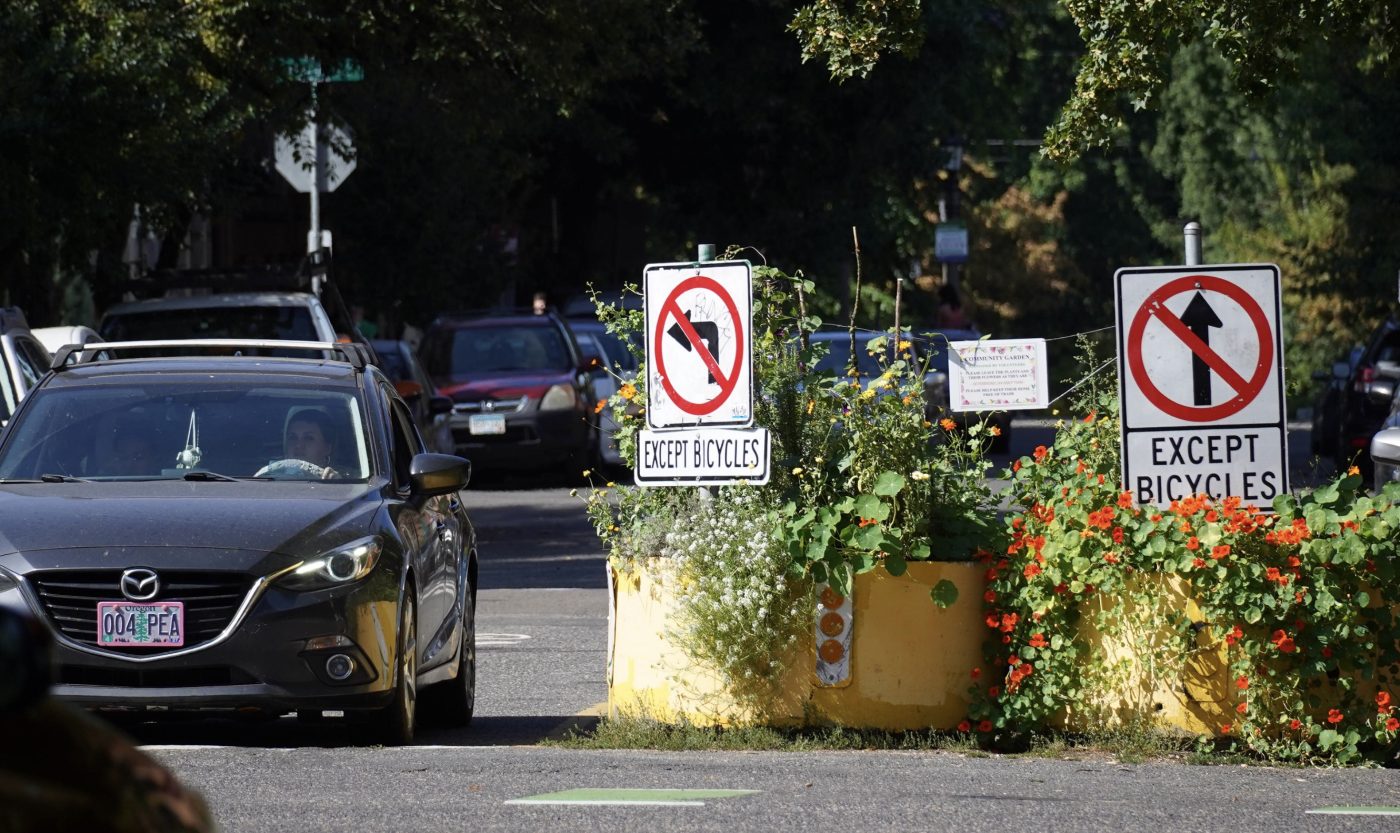
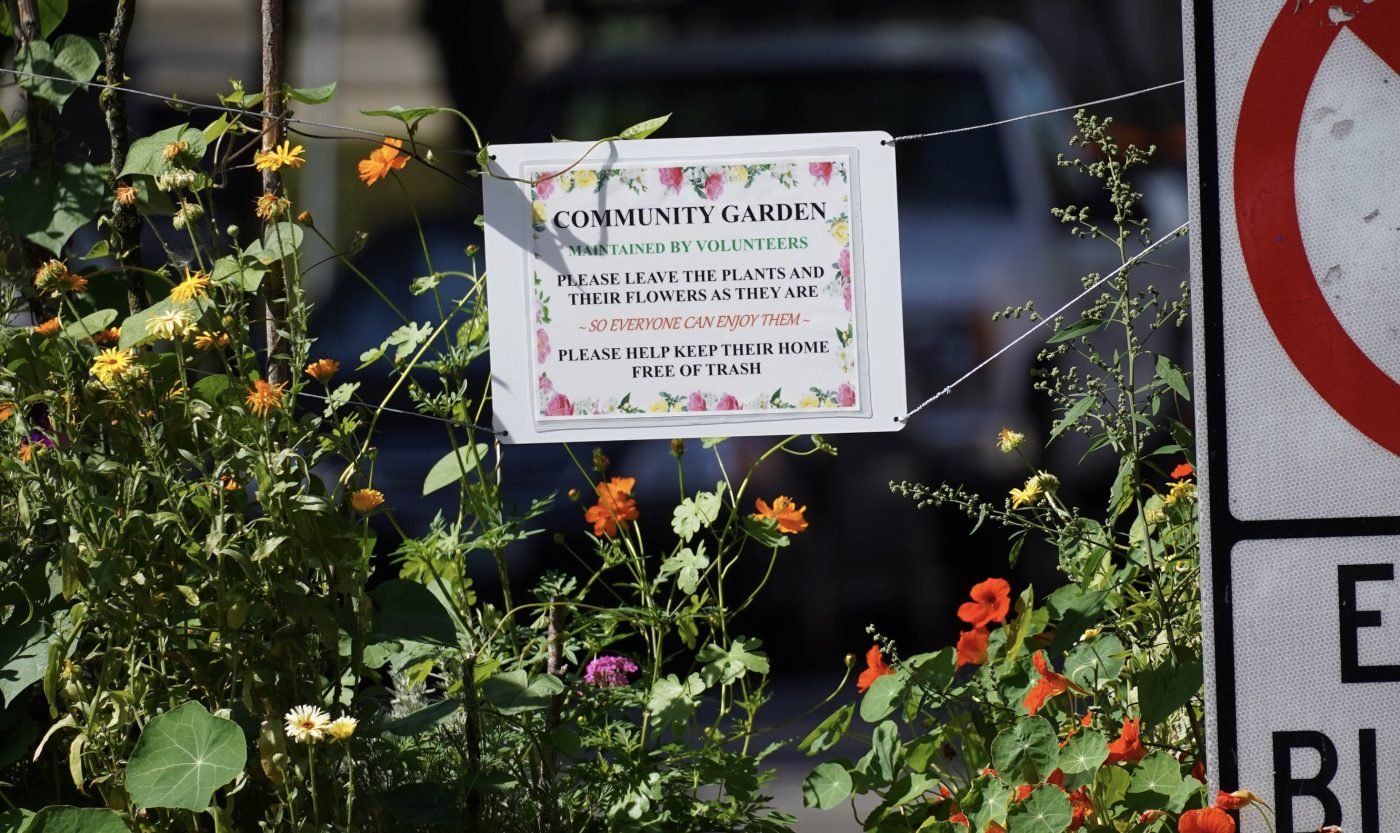
Over on NW 20th at Everett (just one block from where U.S. Congresswoman Suzanne Bonamici was hit by a car driver while walking in a crosswalk in 2023), I found a bustling streetscape adjacent to multi-story apartment buildings and Fred Meyer store. That part of the Nob Hill neighborhood is dense and the intersection of 20th and Everett had a constant flow of drivers, walkers, bicycle riders, scooter users, folks in mobility devices, and so on. The two concrete barriers the create the diverter in the northeast corner of the intersection help calm the intersection by eliminating one option for drivers. Since 2022, this greenway on 20th has been an important north-south street in the bike network that connects to other greenways on Flanders, Johnson, and so on.
I also noticed that if the city removes this diverter, they’ll also be removing the community garden that has sprung up inside them. The two large concrete barrels are filled with soil, plants, and flowers that spill over the sides and onto the street. “Please leave the plants and their flowers as they are so everyone can enjoy them,” reads a sign hanging by a string between to “Except Bicycles” signs.
There would be a significant impact to road conditions in northwest if these diverters are removed. For that reason alone, I’m surprised at how this plan to remove them has emerged largely outside public view. The Problem Solver Network meetings where issues were apparently first raised are not easy to access by the public. Their website doesn’t list dates or times and there are no meeting minutes or agendas to review.
If, as Portland Solutions maintains, these diverter removals have been discussed for several months/years, that means there’s been plenty of time to notify the public and seek feedback to make sure it’s a sound decision. When the removal was announced last week, there hadn’t been any outreach to the City’s Bicycle Advisory Committee, a body that exists to help advise on this exact type of issue.
I’ve got questions out to Portland Solutions and others to learn more about the rationale behind this decision and to find out whether or not the removal is imminent. And I’m not the only one.
“Keeping the diverters intact is the outcome Councilor [Mitch] Green is working toward and at a minimum wants to get a comprehensive understanding from officials responsible why removing these diverters is justified,” Green’s Chief of Staff Maria Sipin shared with me today. “Our office is concerned that this could initiate more removals if the public and City Council aren’t informed.”
I’m still waiting for more clarity. But at this moment I’ve heard mixed signals about how imminent the removals are. I’ve heard the order to remove them is final and that City Administrator Michael Jordan is moving forward with it right away. And the email from Brocker-Knapp used the word “quickly”. But Portland Solutions shared with me Friday that, “We’re in the early stages of this,” and that, “I still think that there’s time for engagement.”
A local urbanism advocacy group that supports the diverters is meeting tonight to talk about the issue and leaders from Portland Solutions are expected to attend the PBOT Bicycle Advisory Committee on August 12th. Let’s hope they remain on the street until at least that meeting so we can better understand the argument against them.
This issue is not just important from a traffic safety and planning perspective, it’s a test of how public engagement works (or doesn’t) in Portland’s new form of government. So far there’s been a major lack of transparency around how the decision was made. In the past, anyone concerned about this could contact the commissioner in charge of PBOT. But now we have city administrators who oversee PBOT and they’re not set up for easy public contact. The page on the City’s website that lists City Administrator Michael Jordan and Deputy City Administrator of Public Works Priya Dhanapal, for instance, doesn’t even have individual contact information.
If you care about this issue and want to make your feelings known, use this form to contact city leaders (in addition to leaving a comment here so city leaders can read it).
I expect to hear more from Portland Solutions and others in the coming days and will continue to monitor this issue closely. Stay tuned.
— For more details, don’t miss my initial story posted on Friday.



